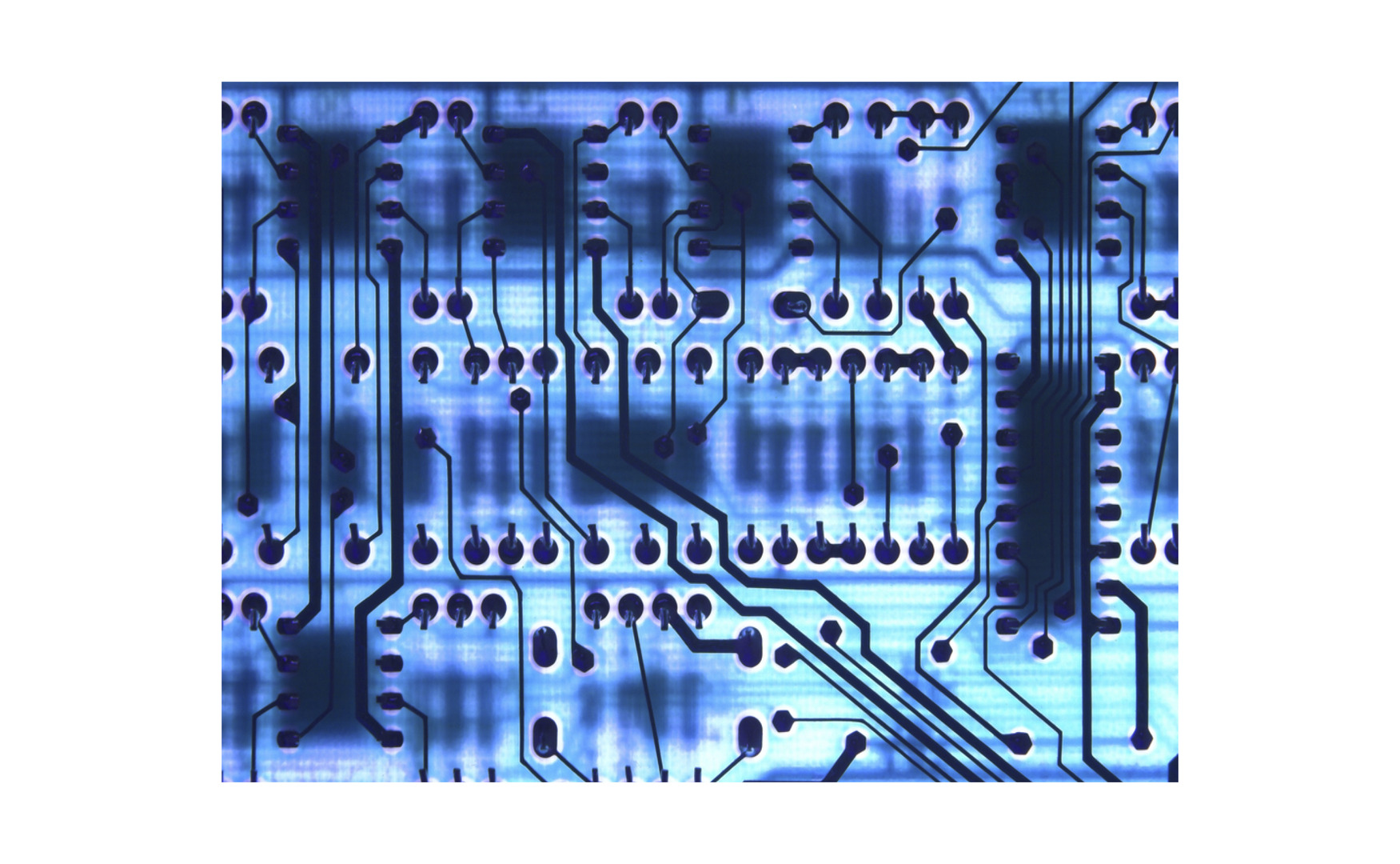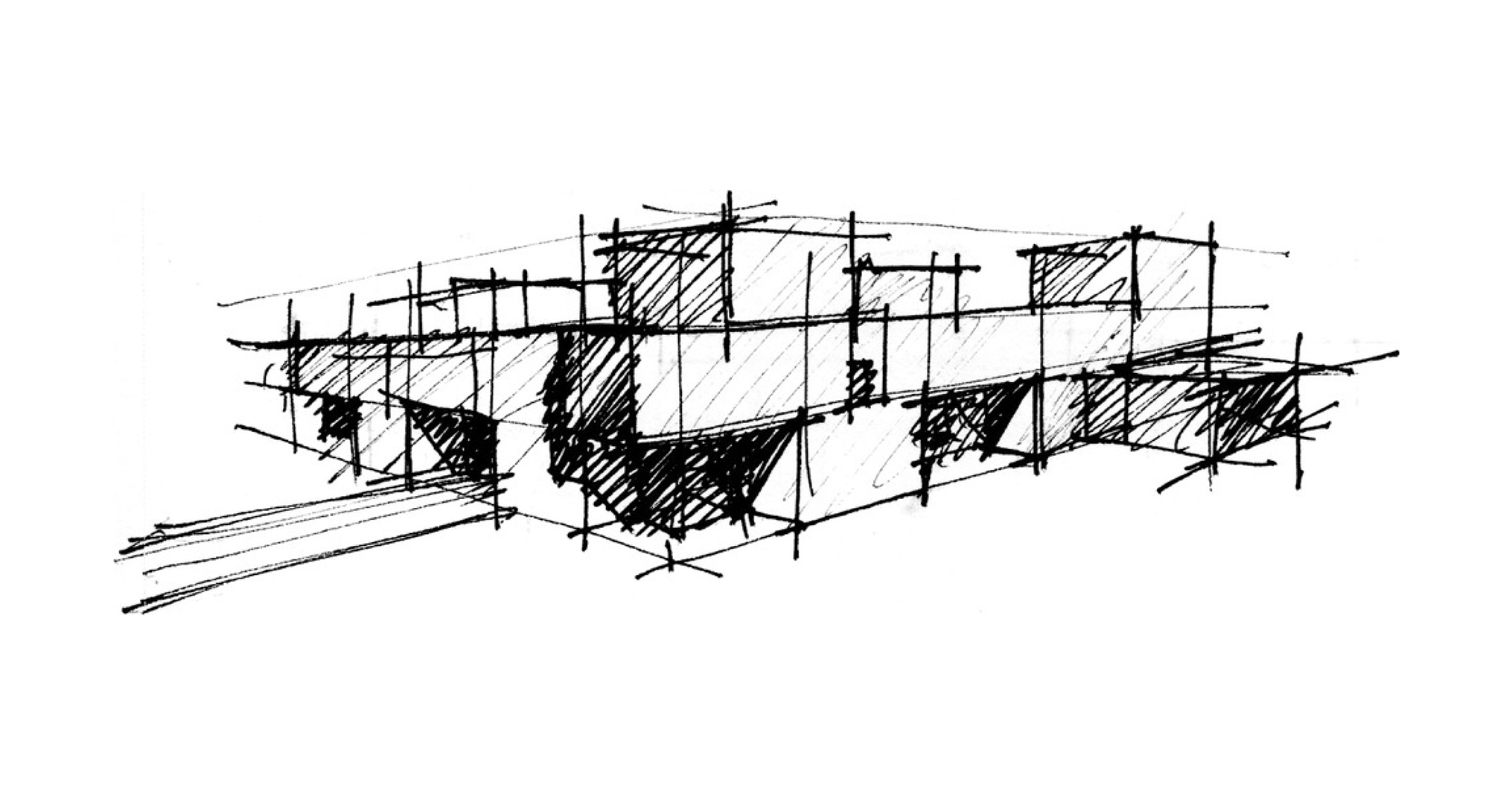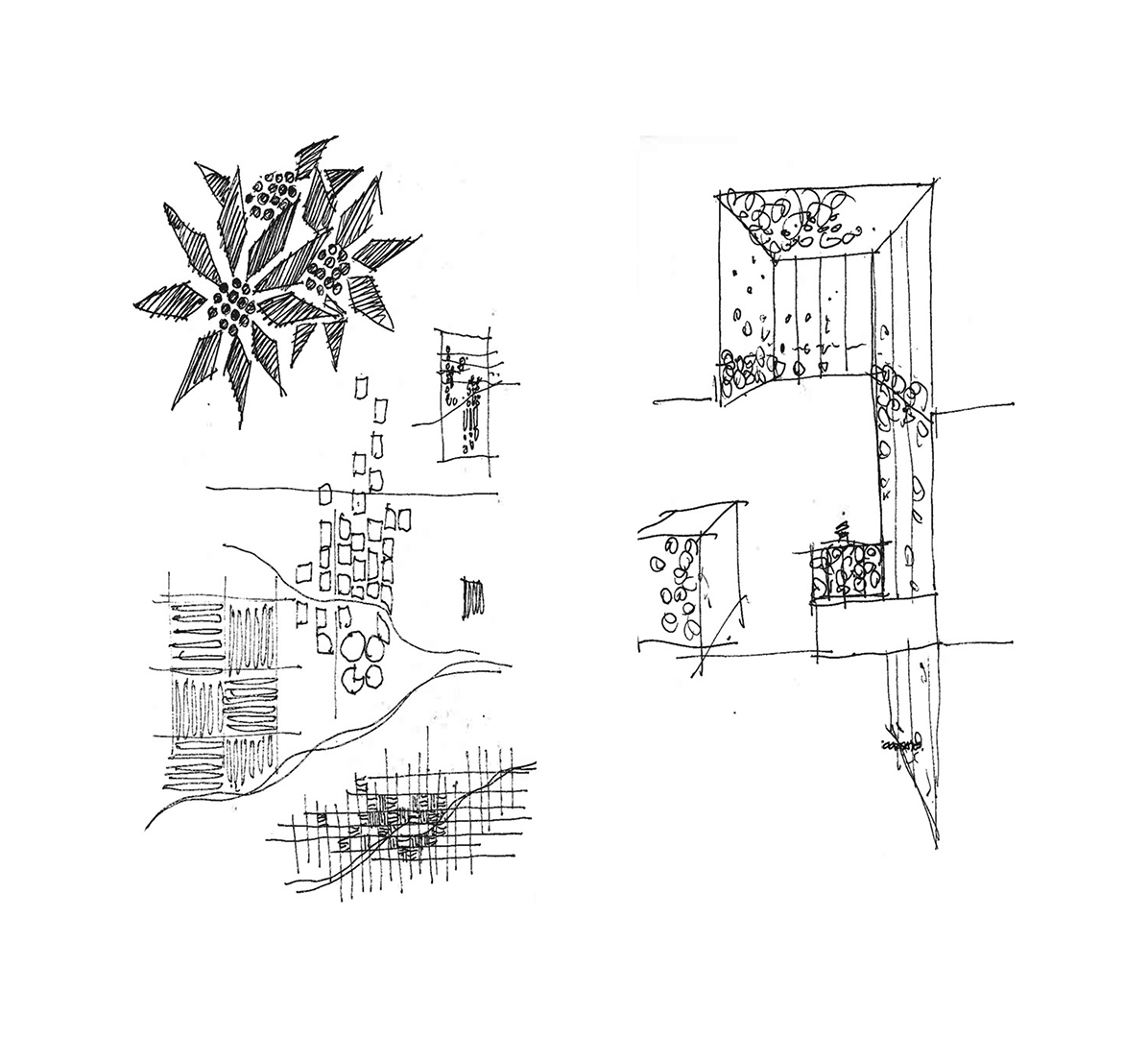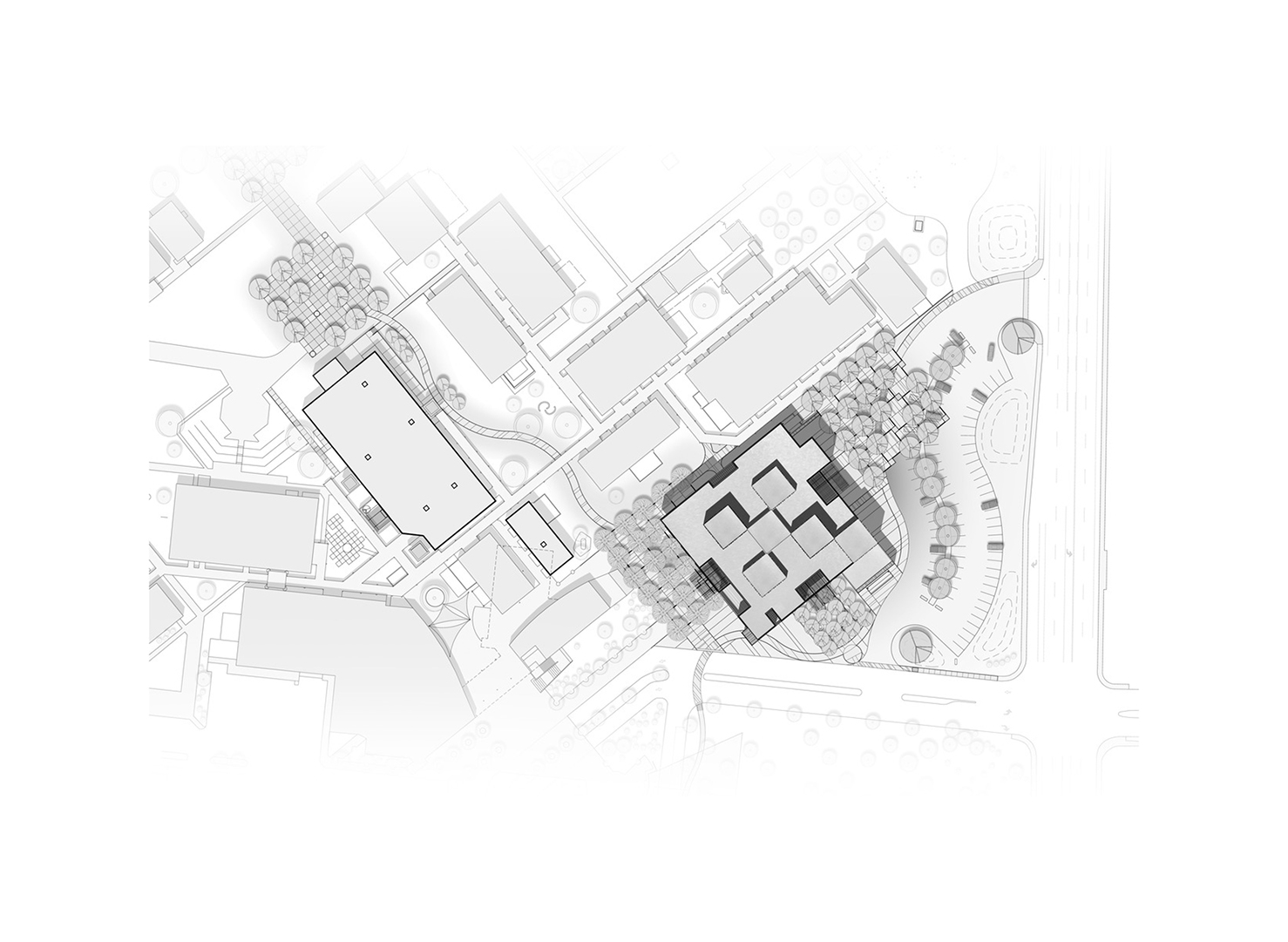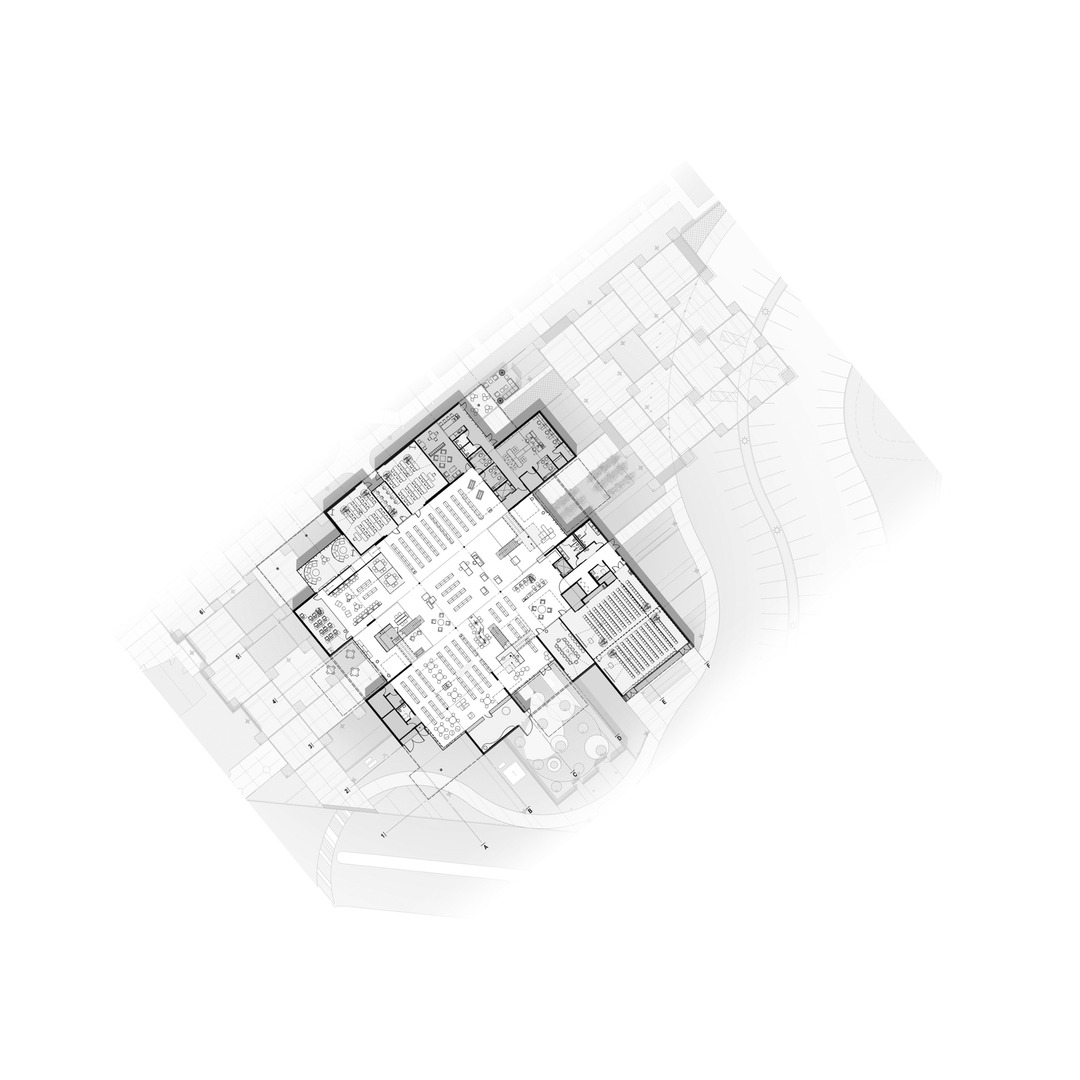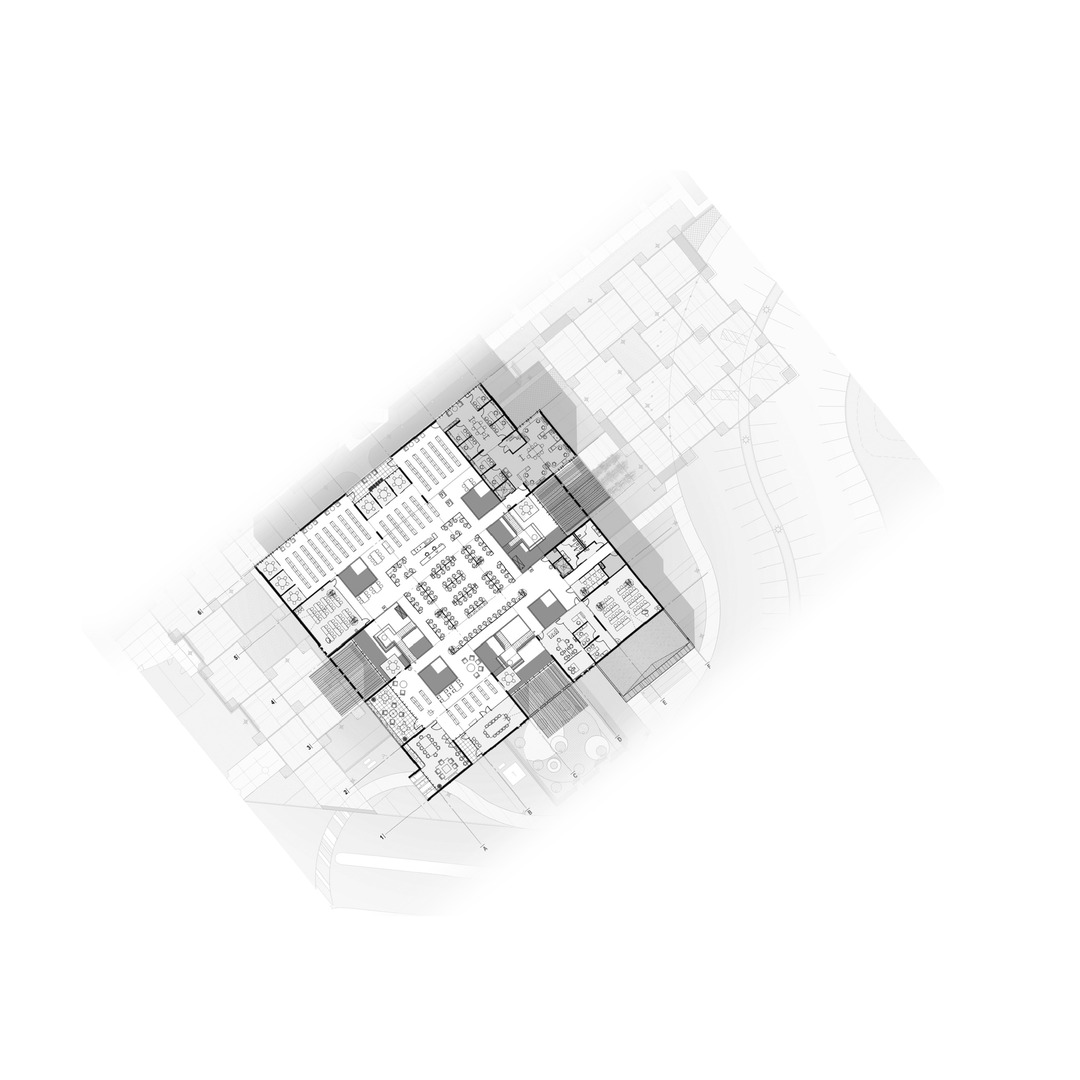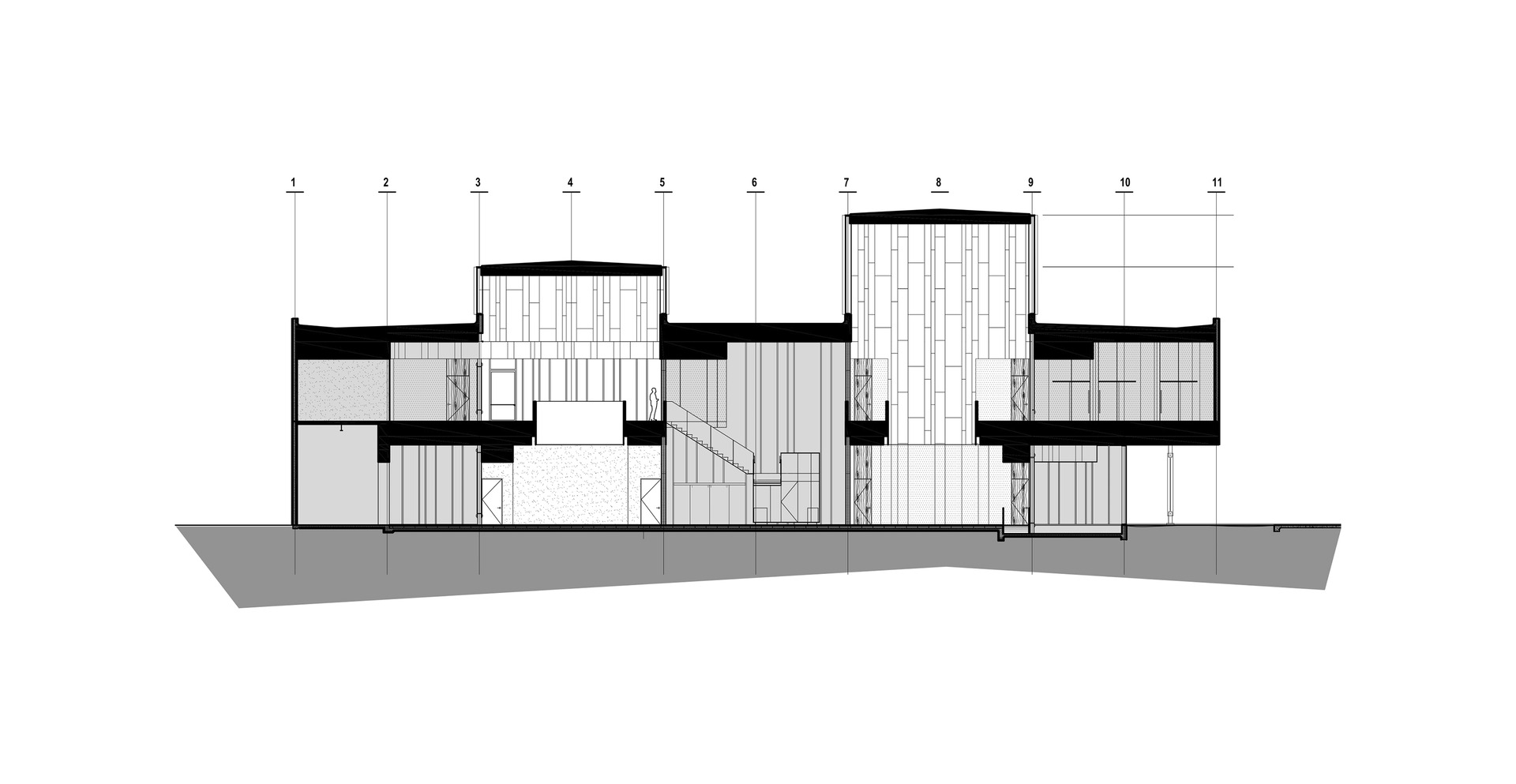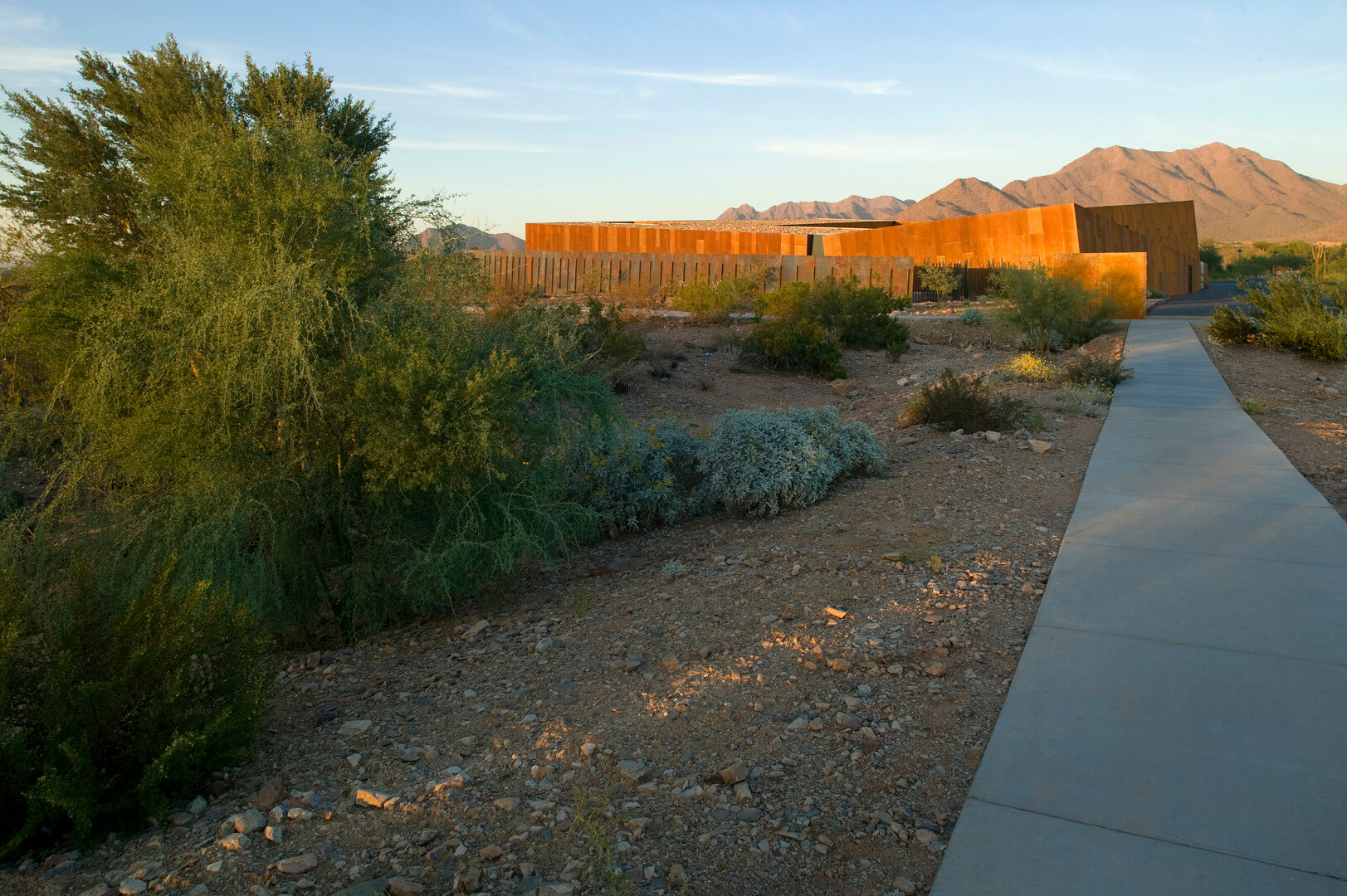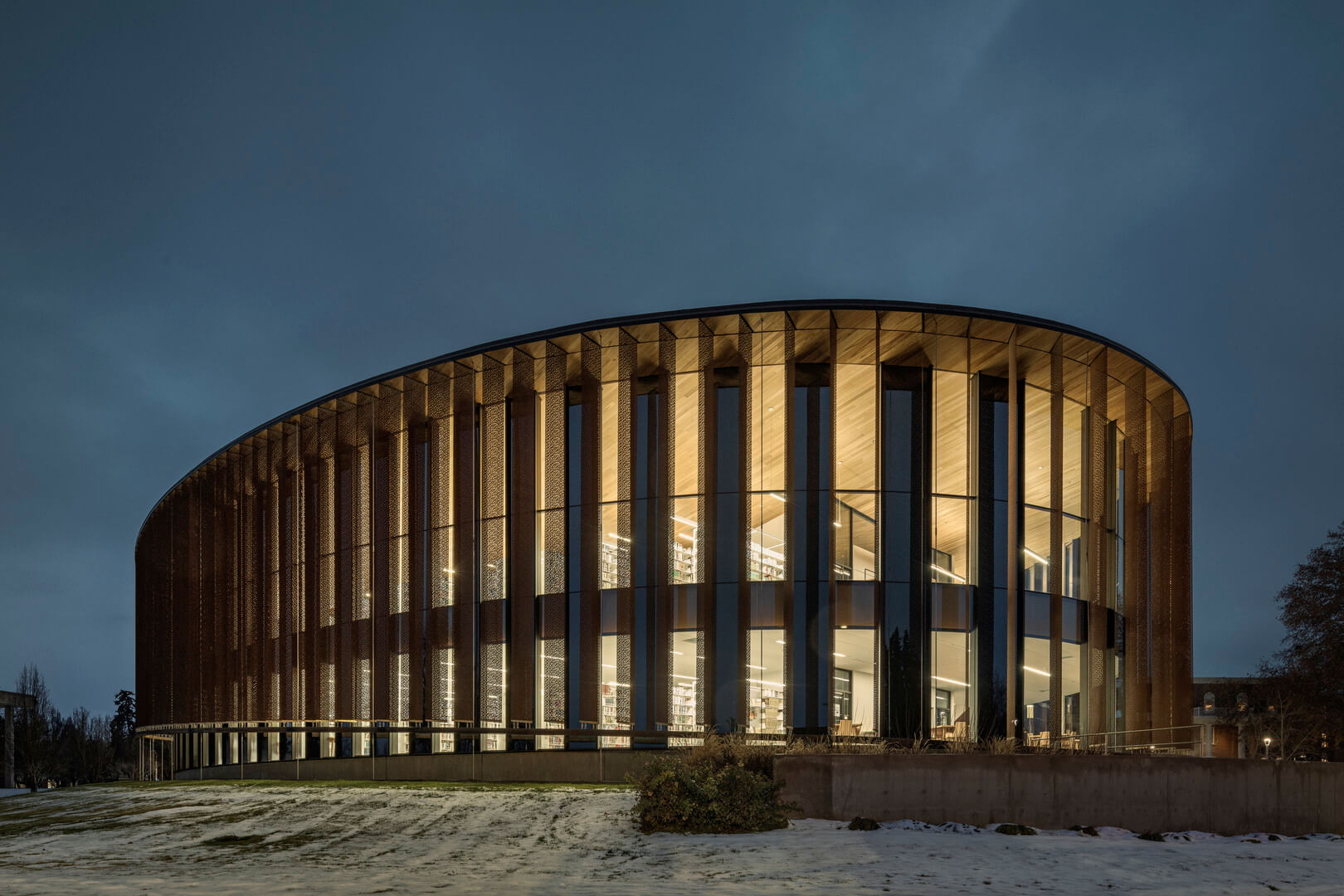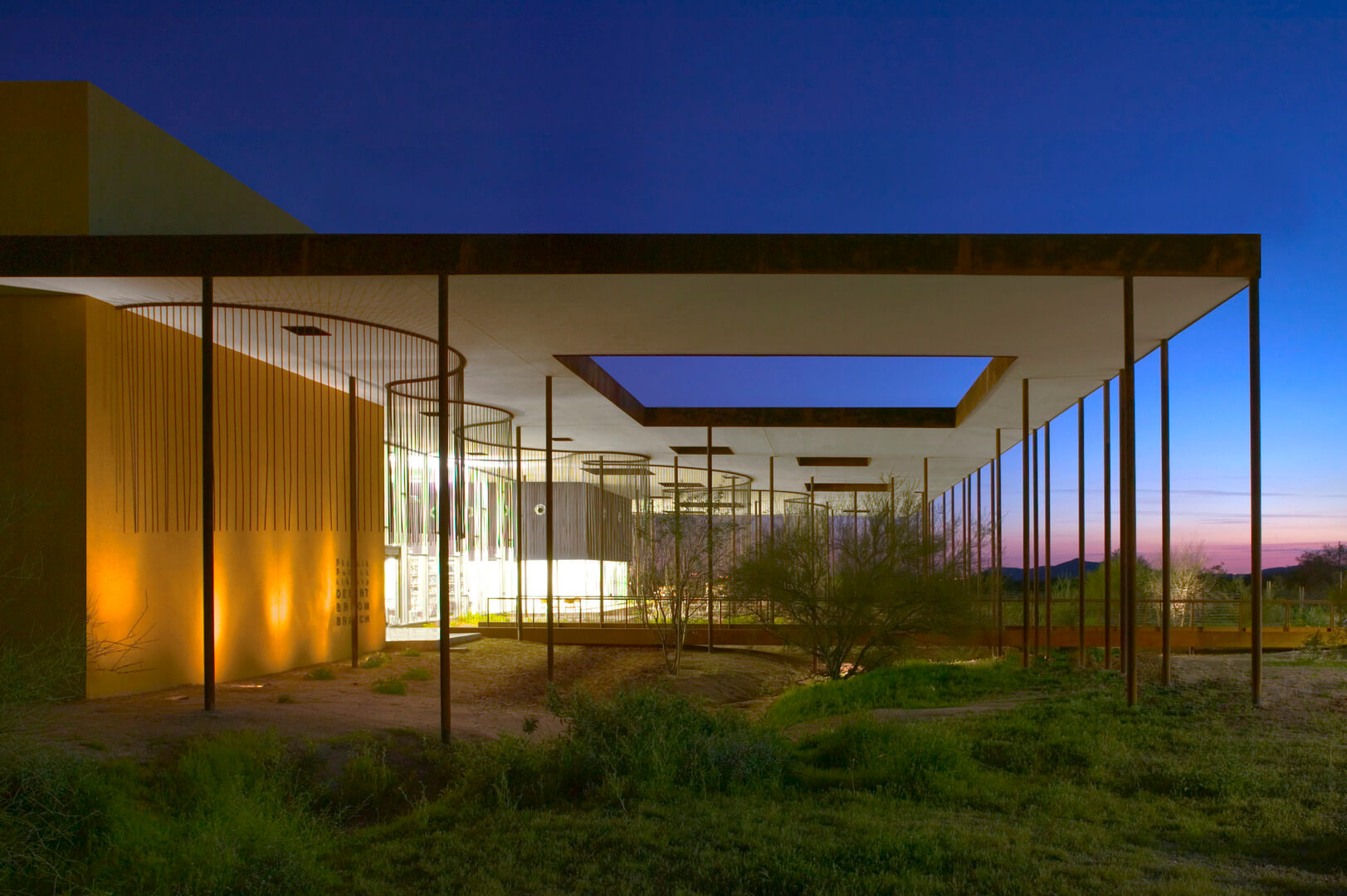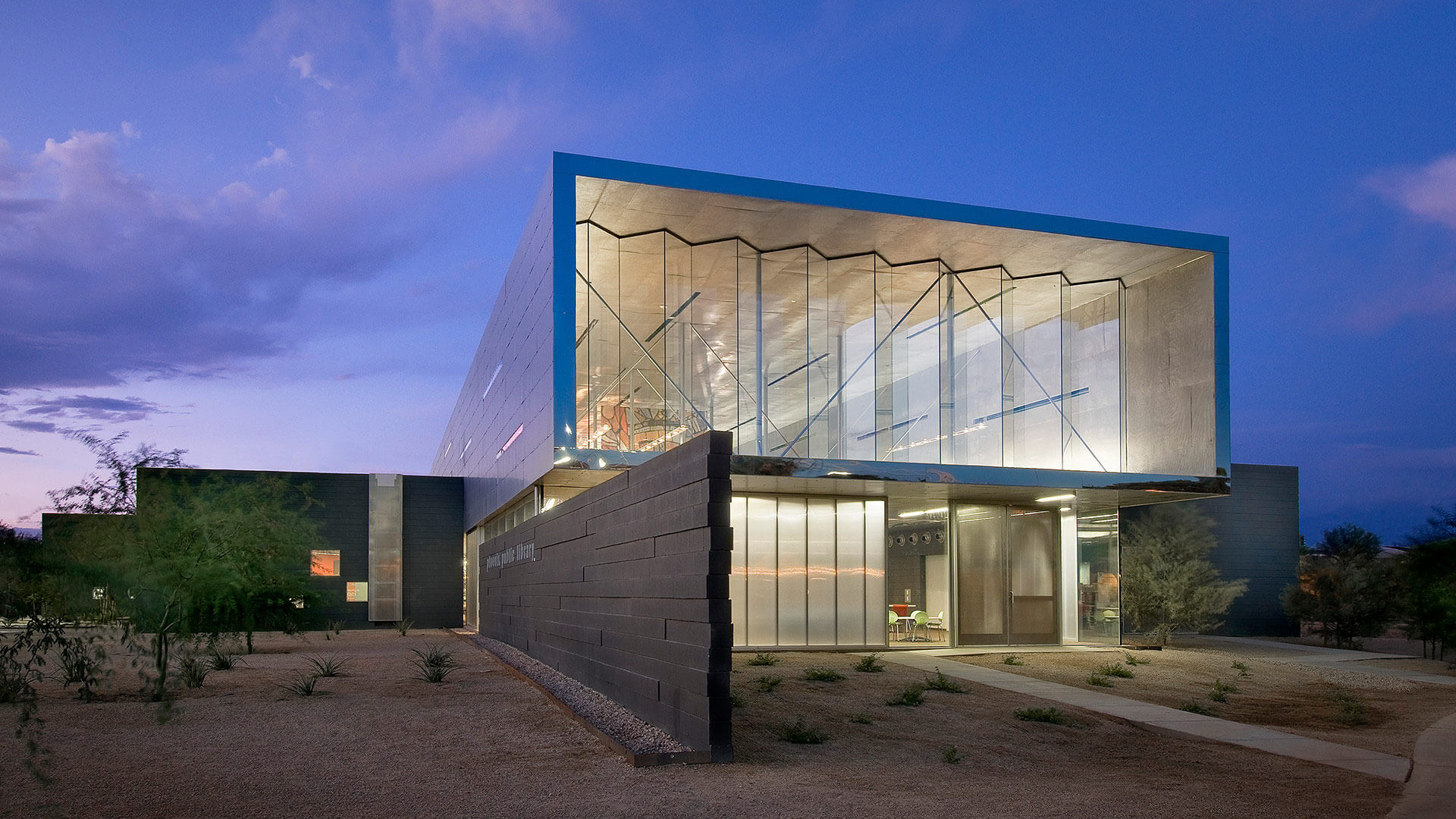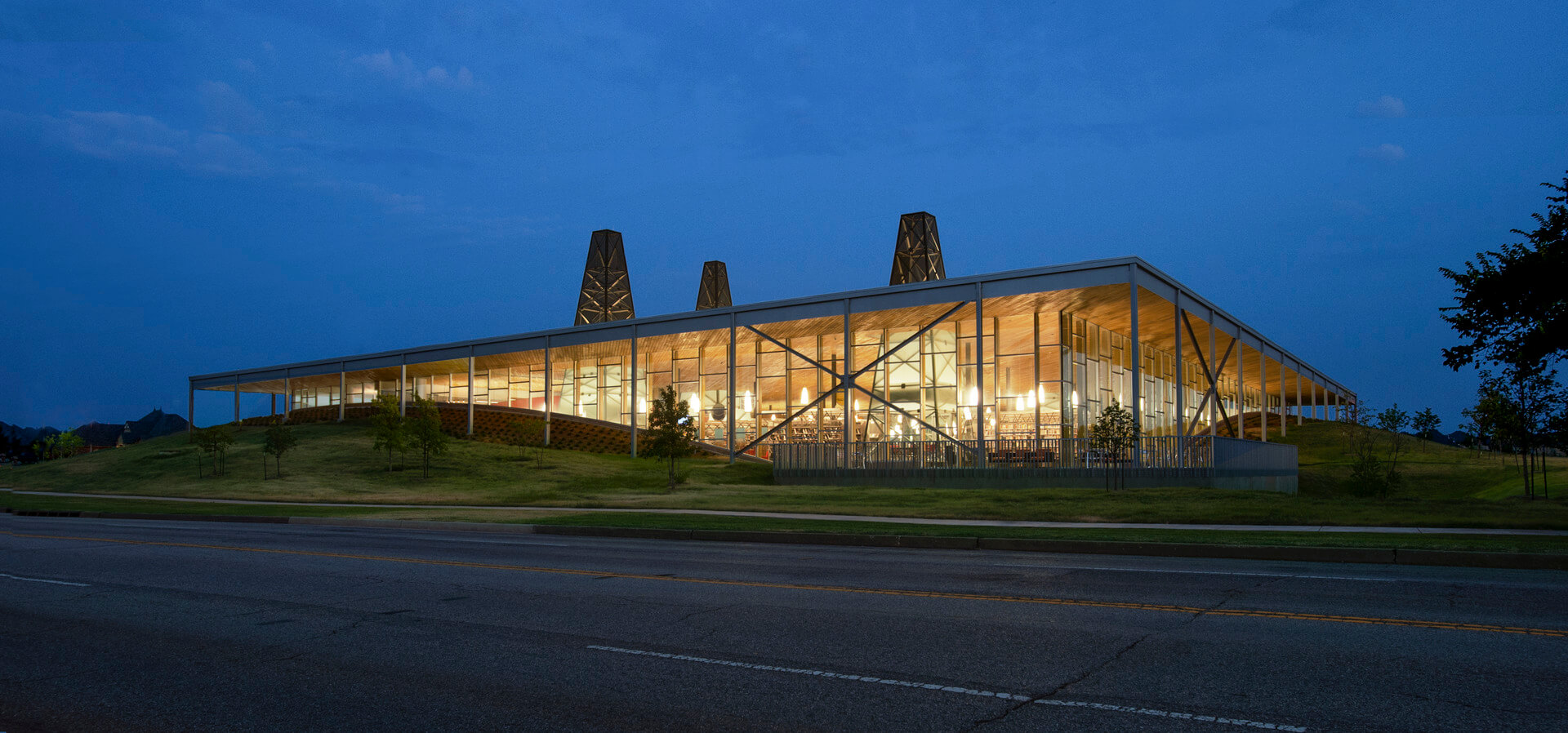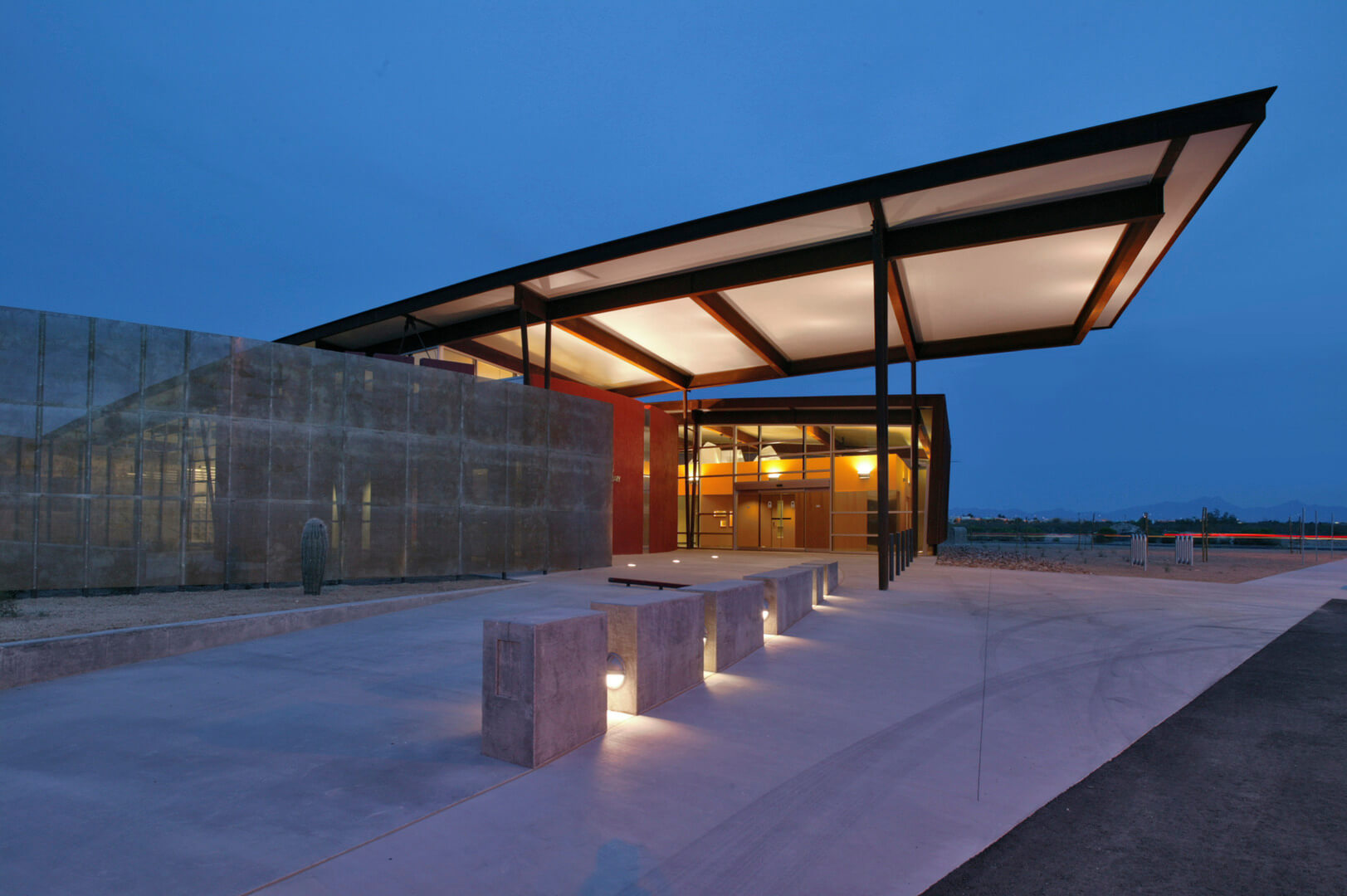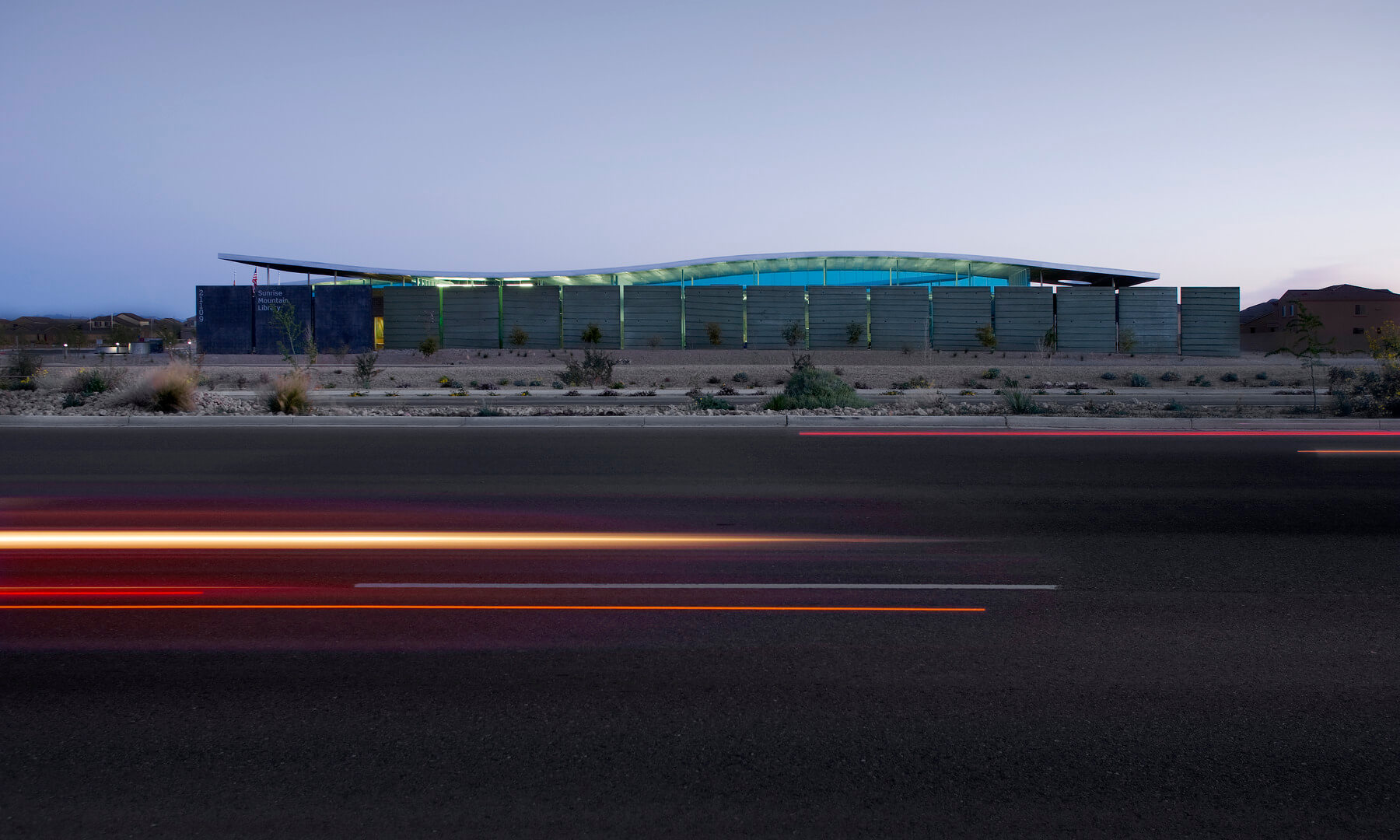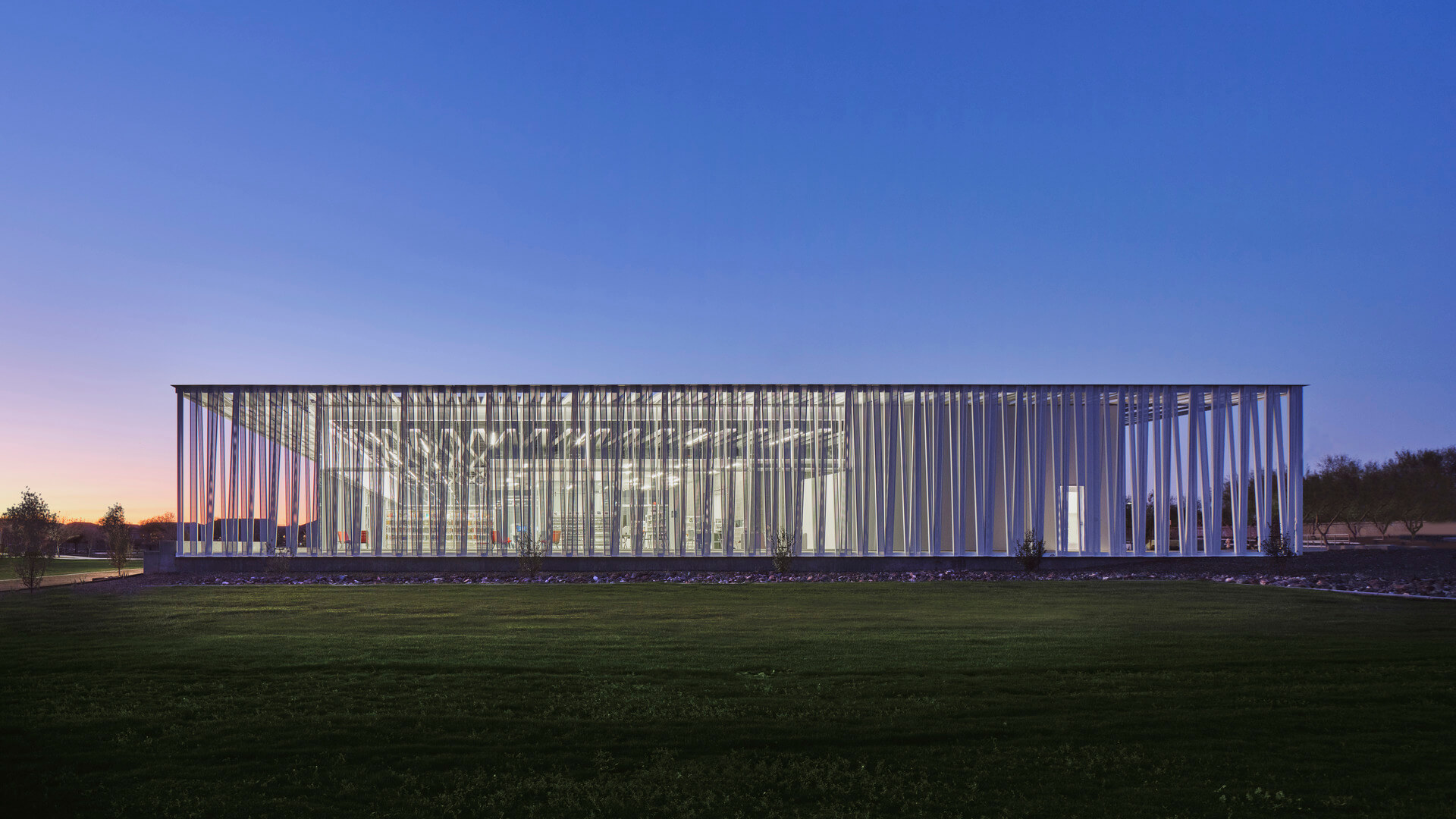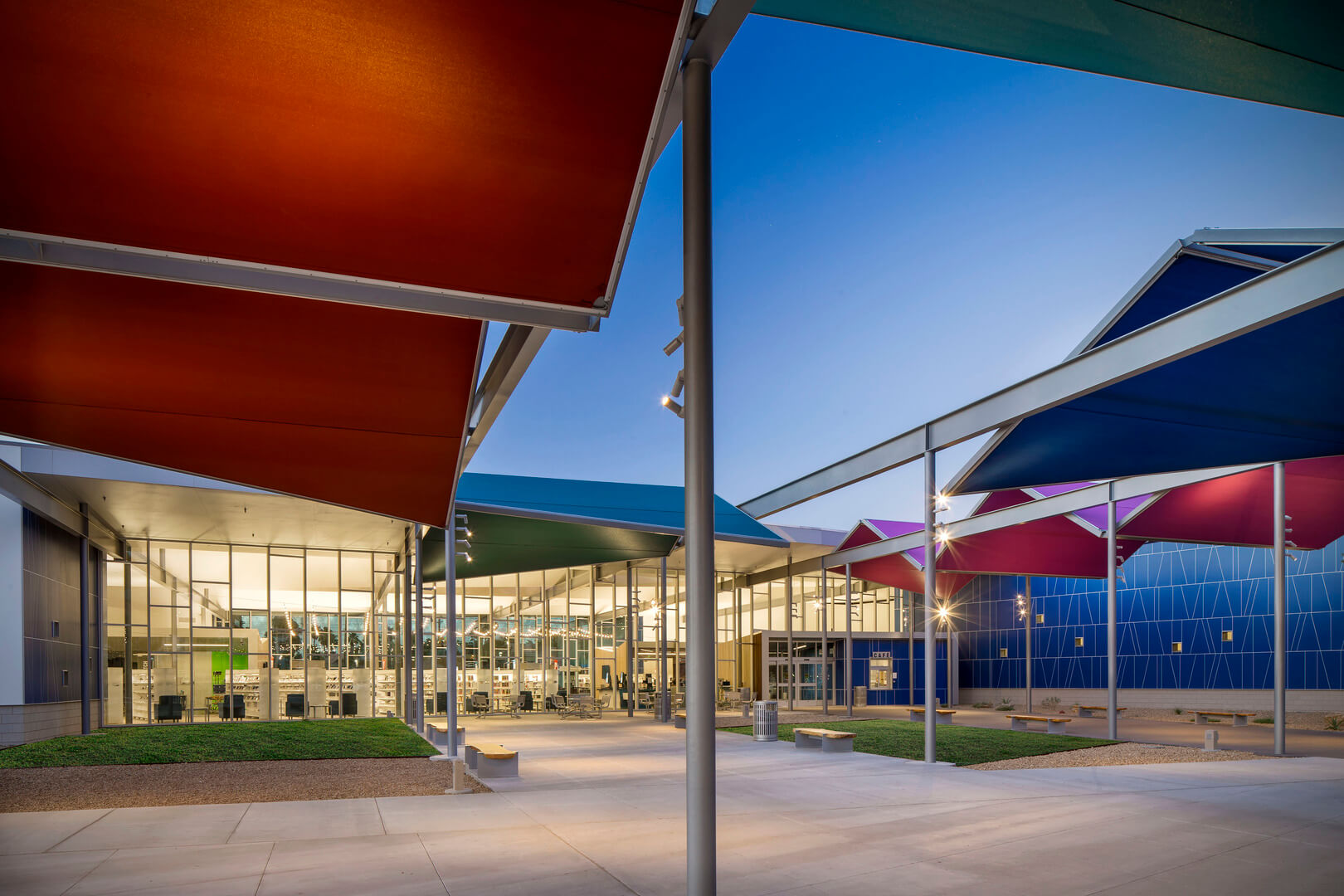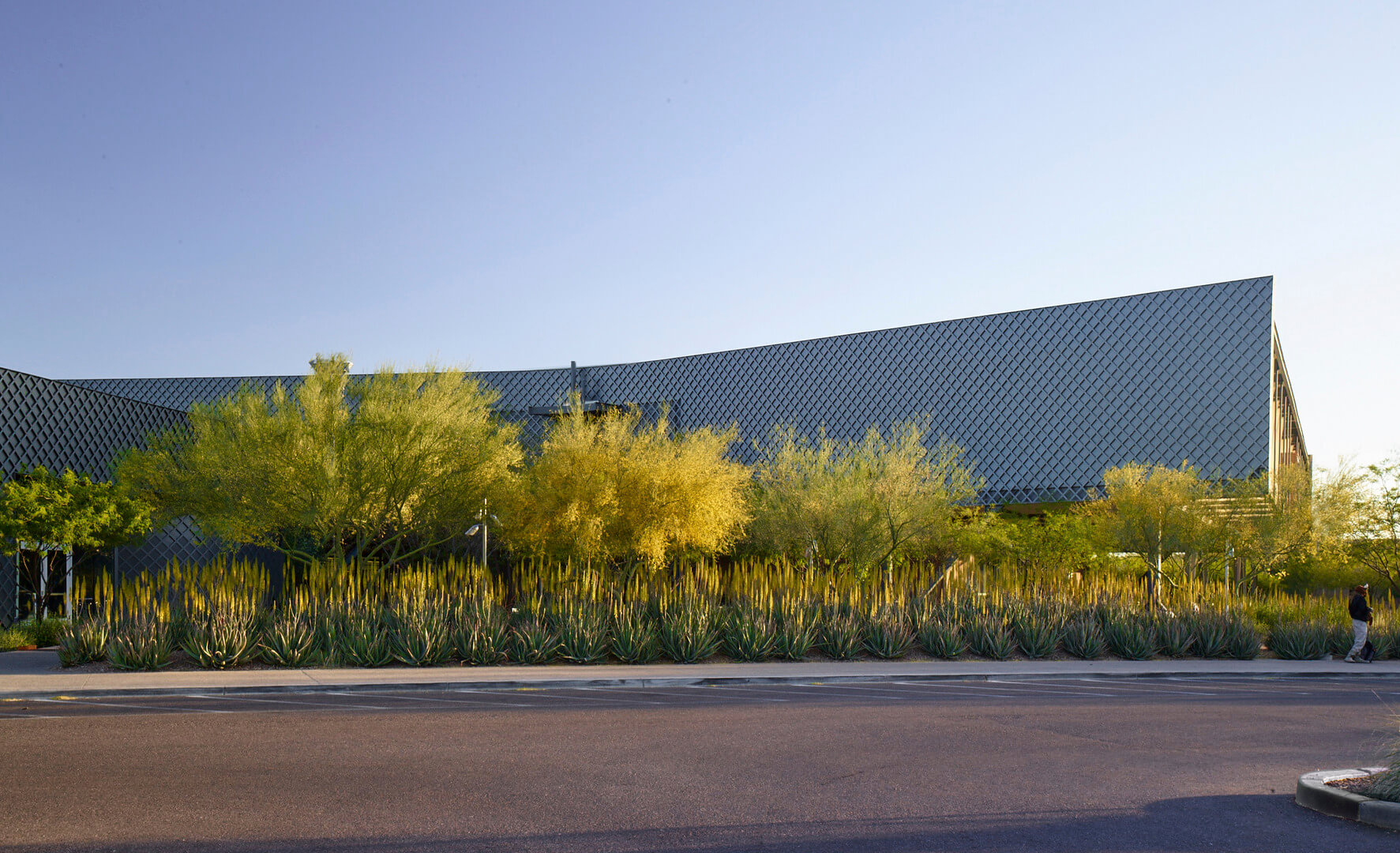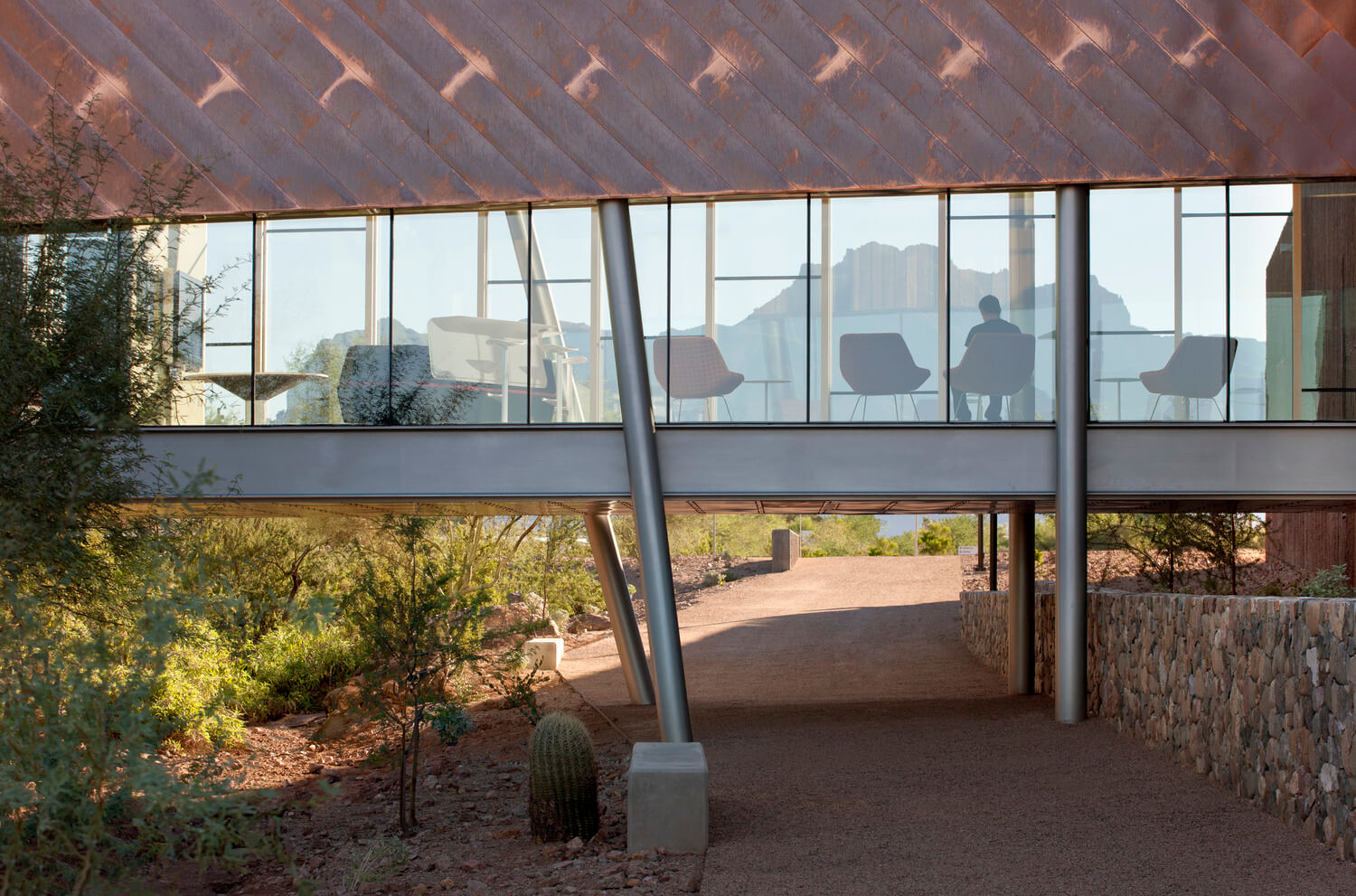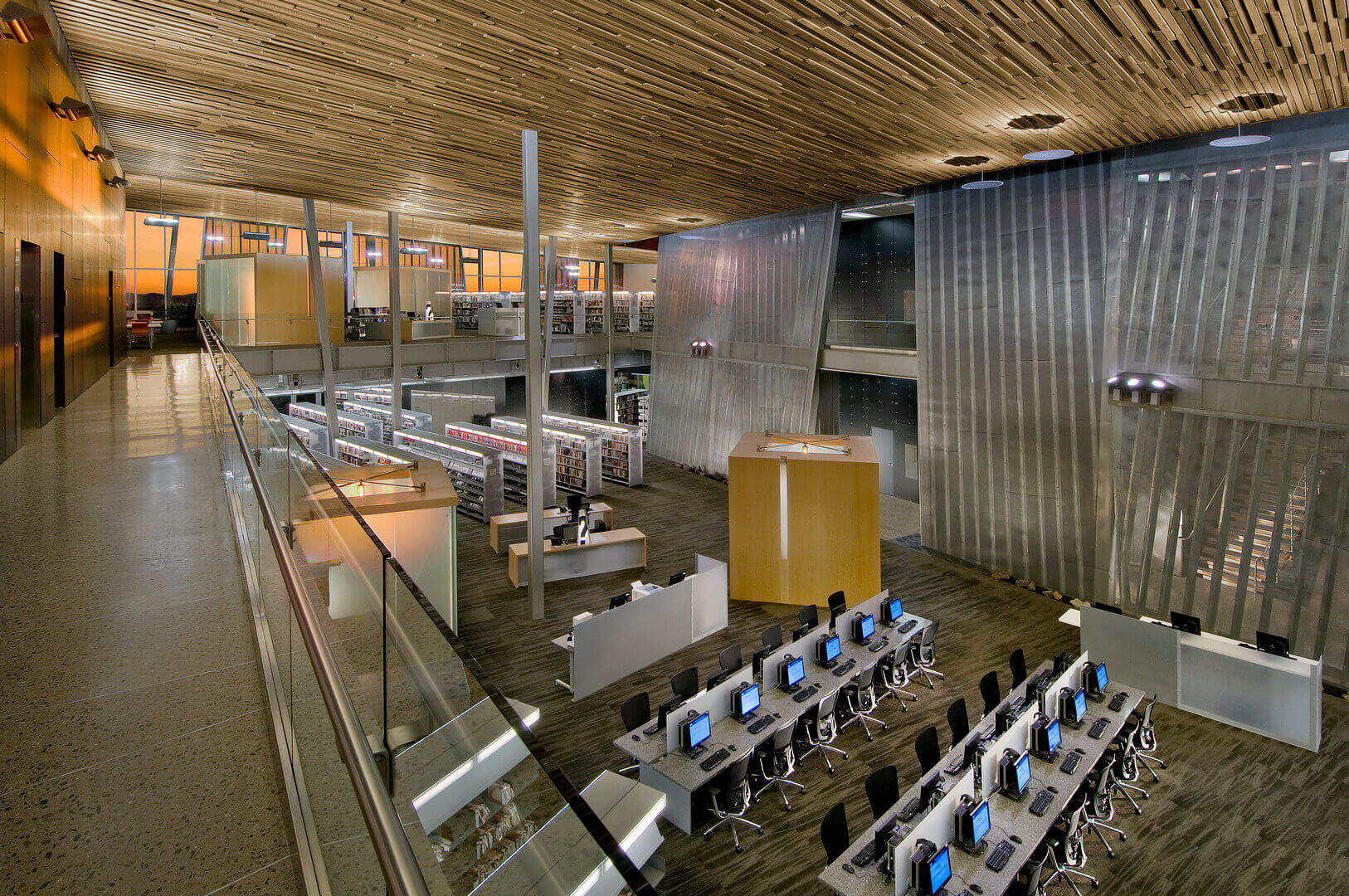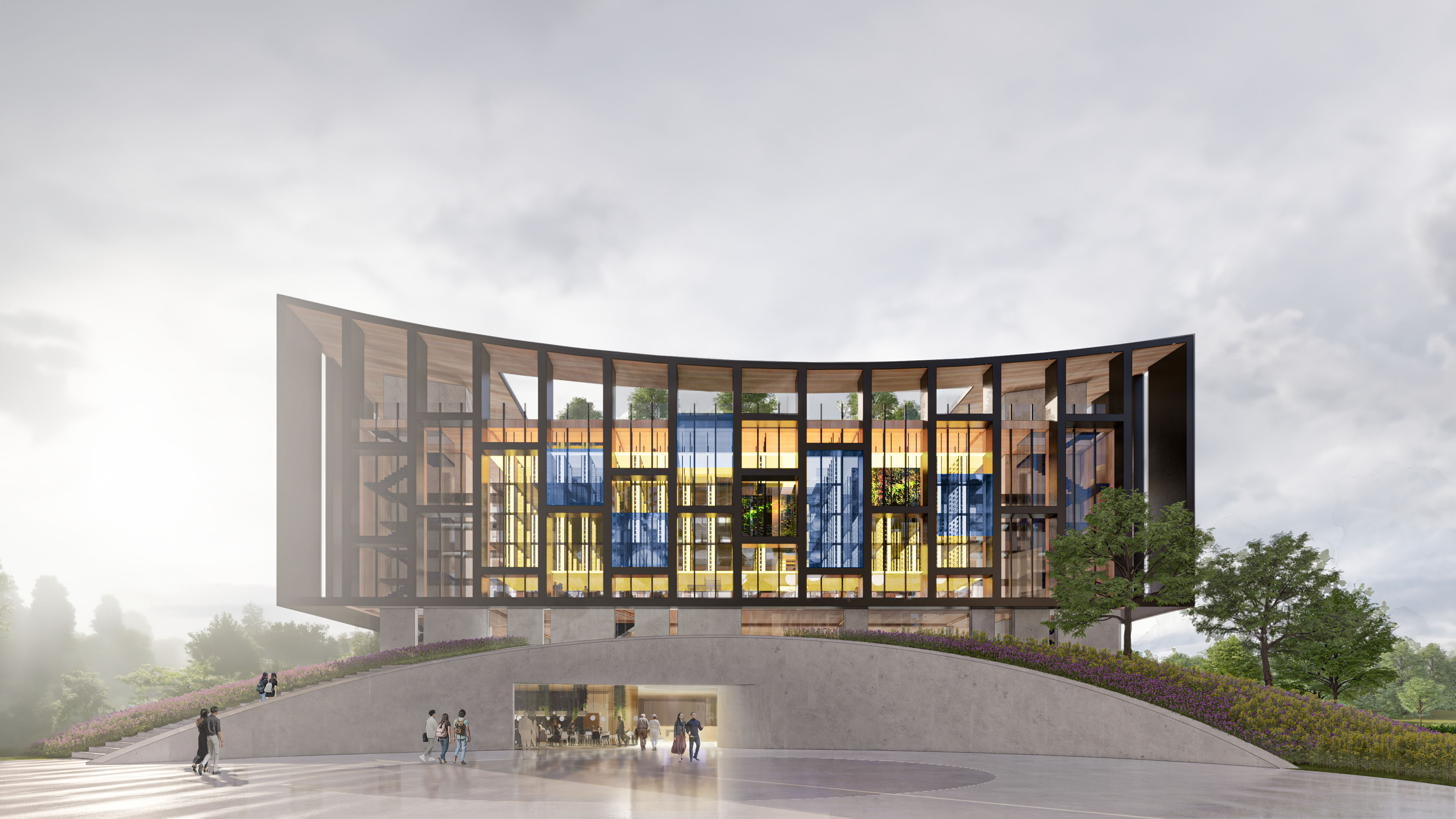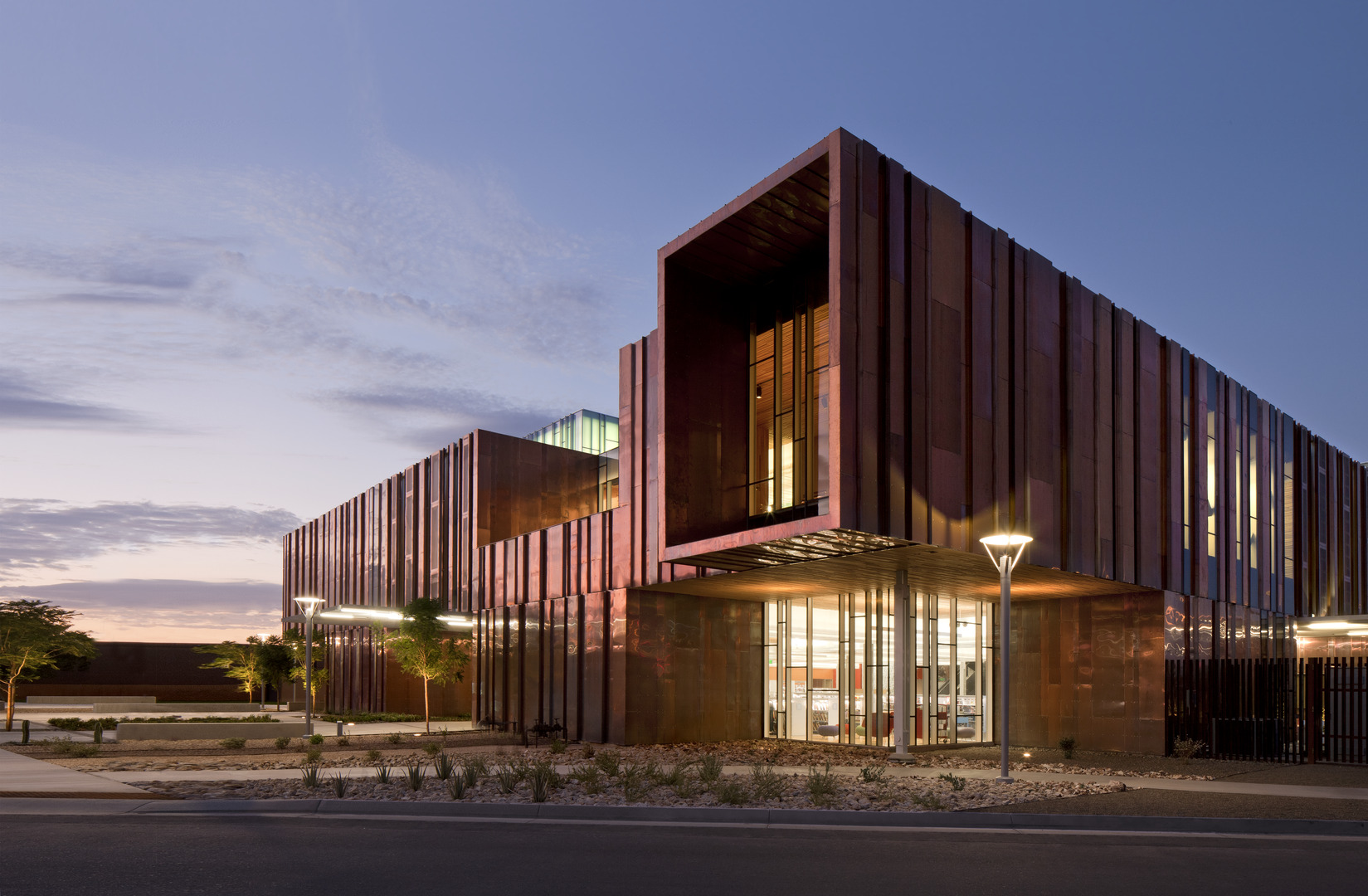
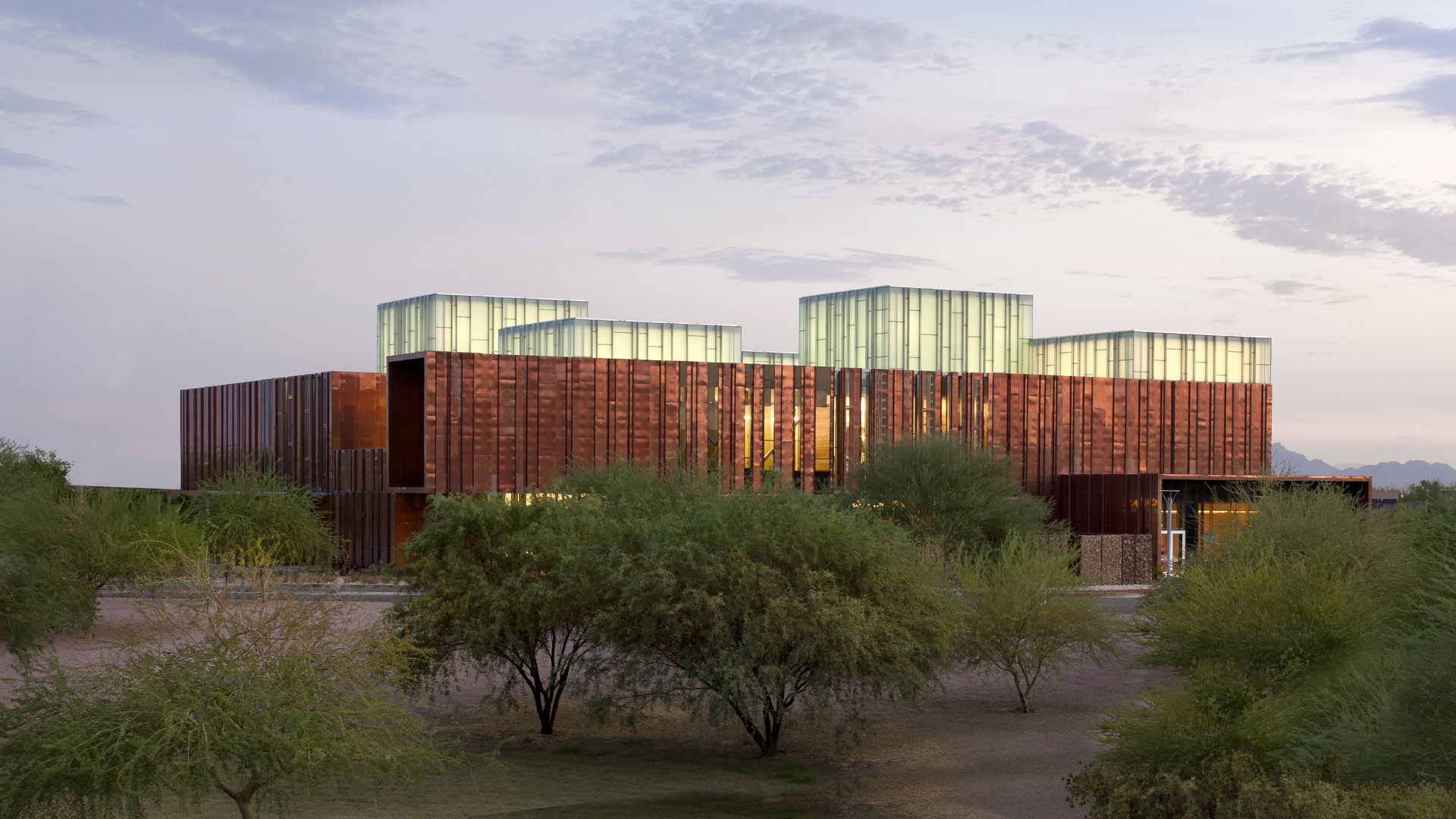
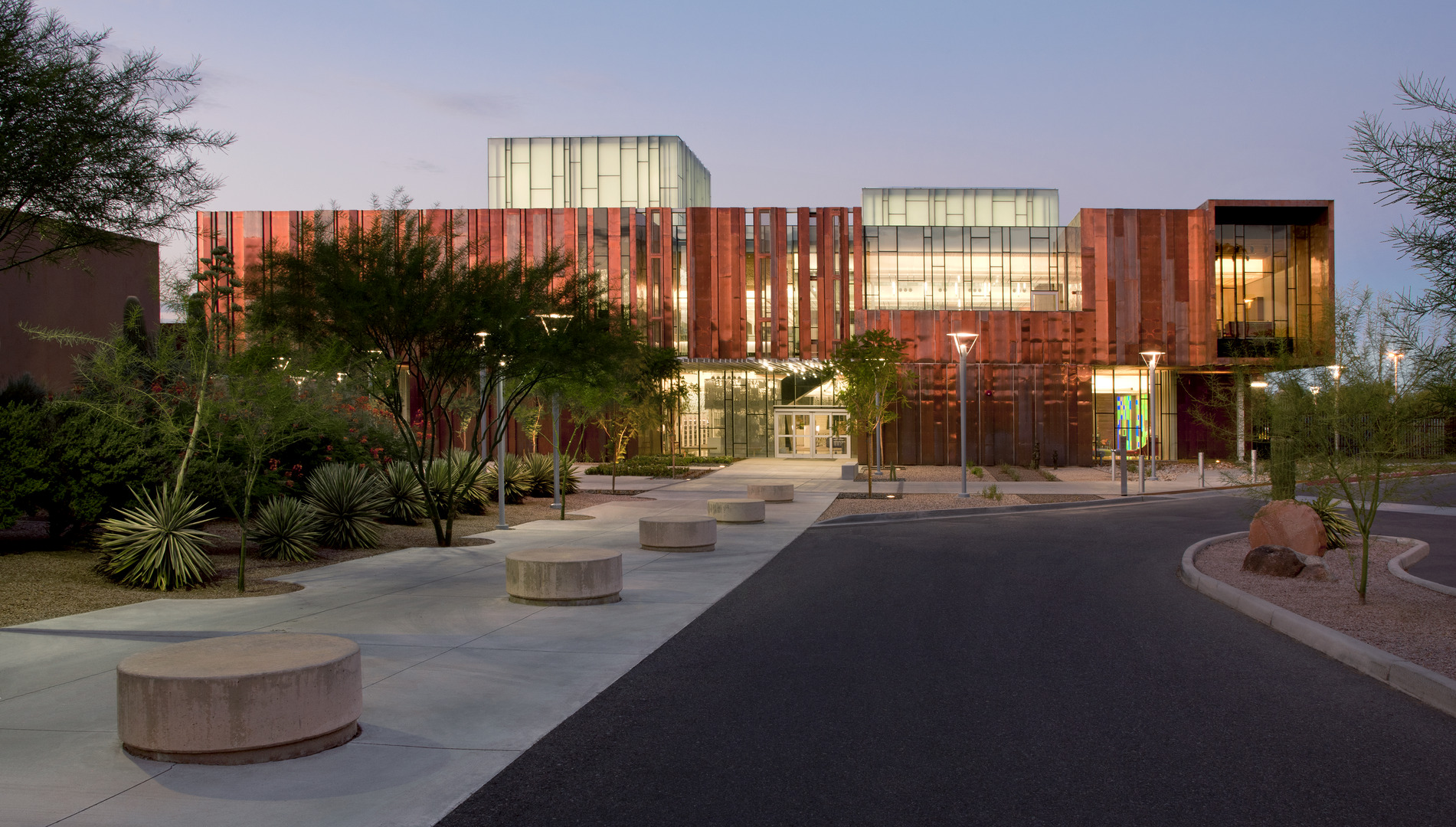
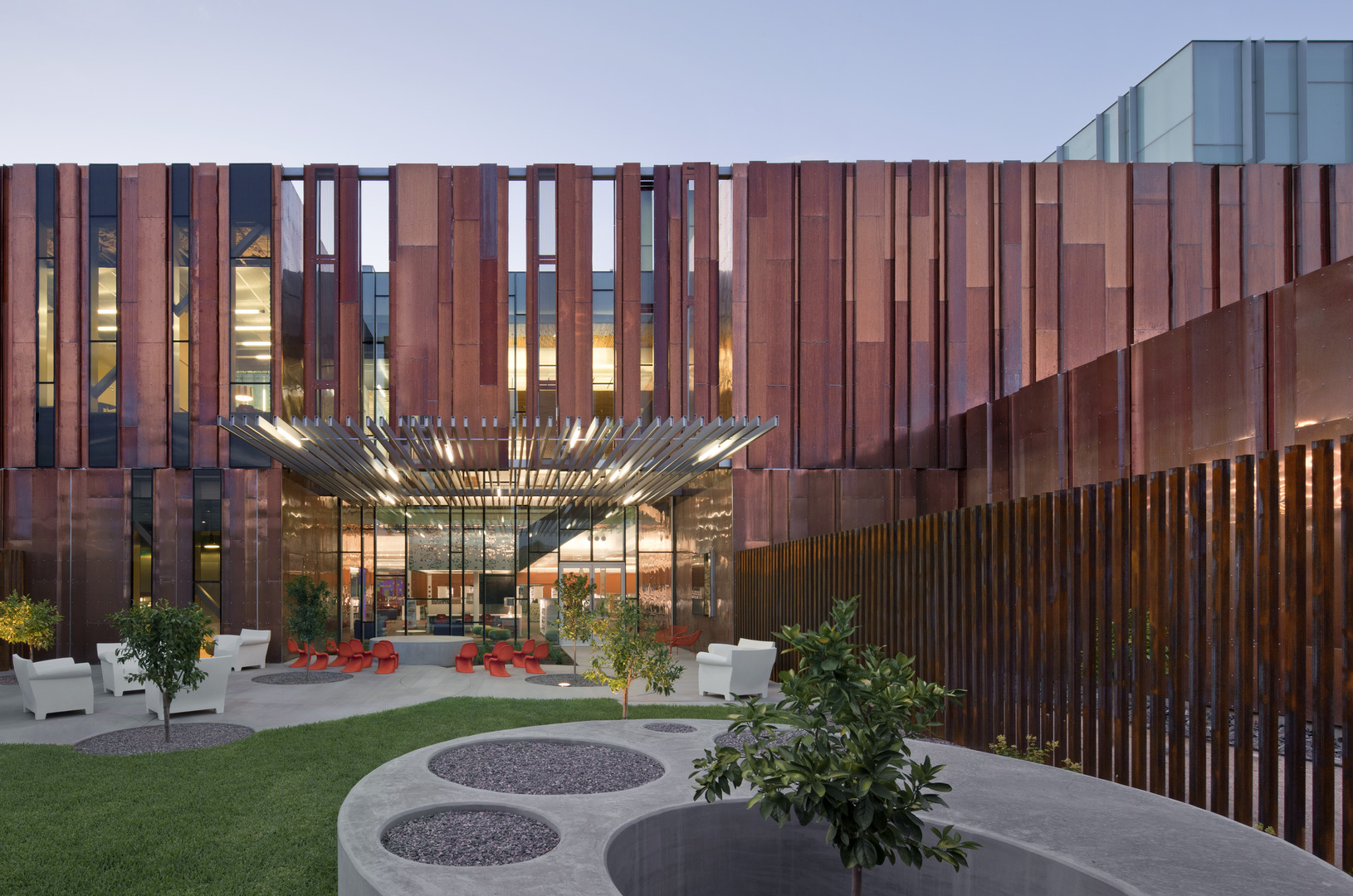
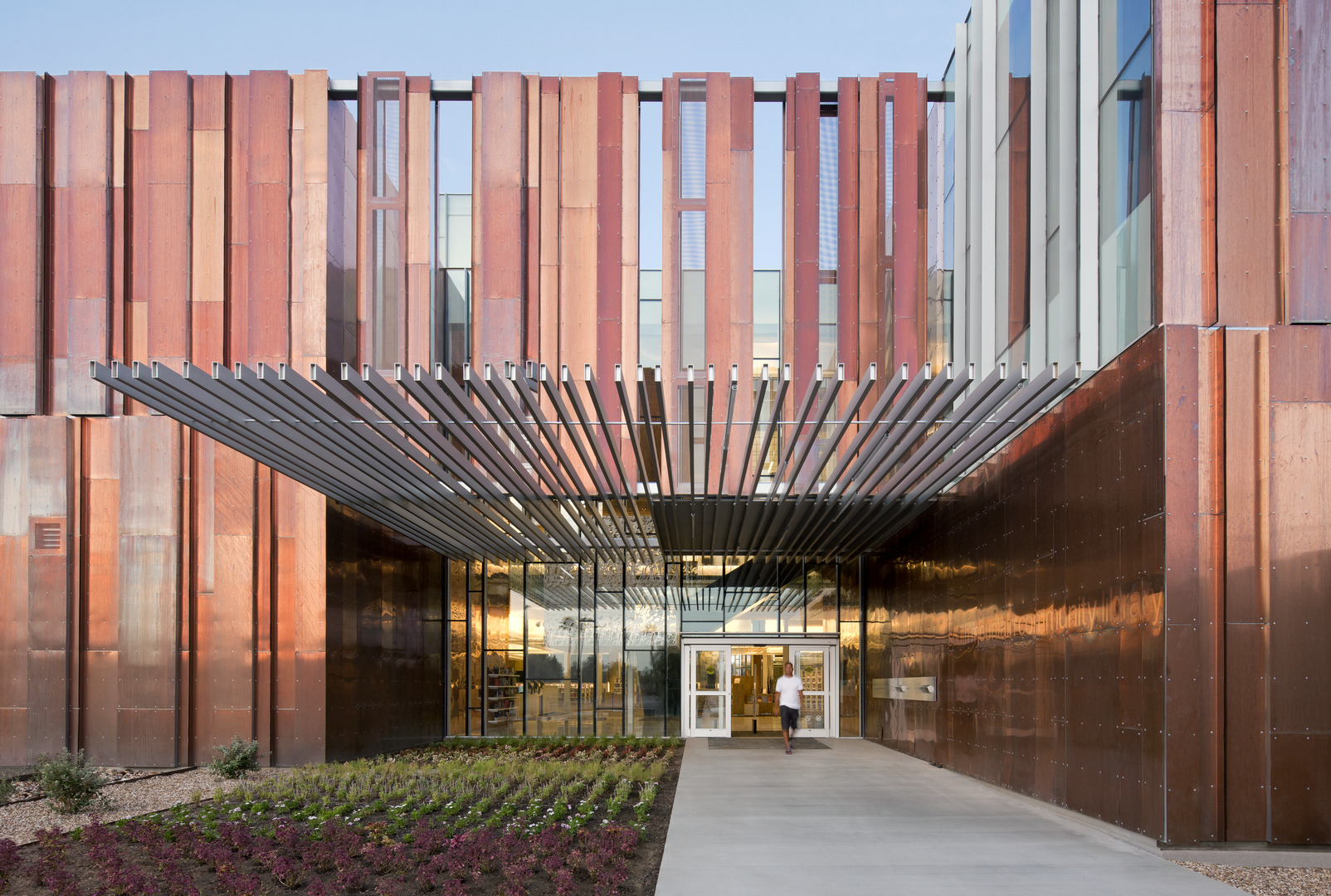
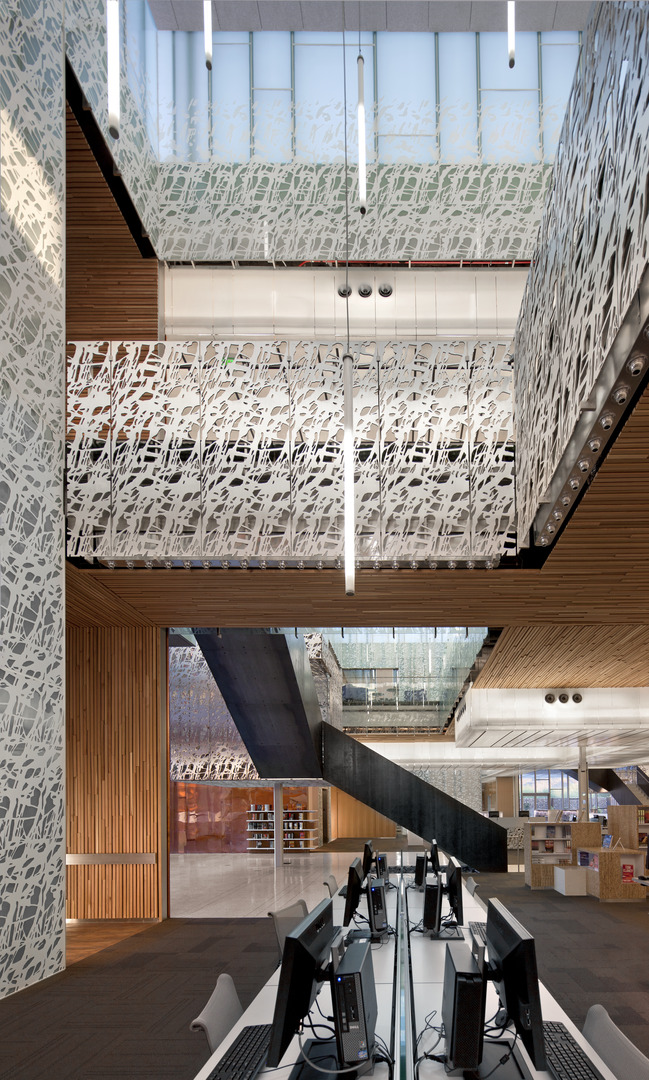
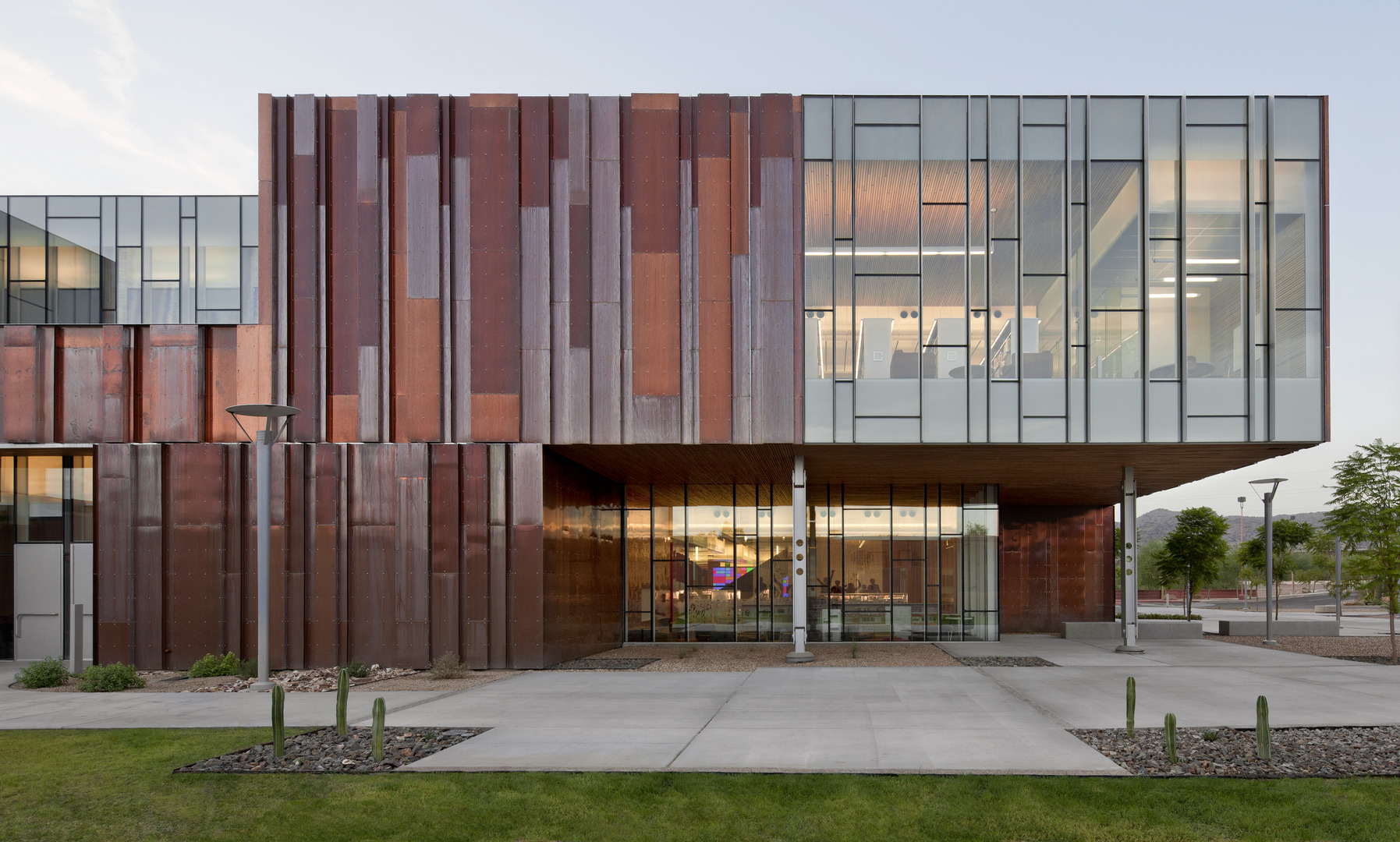
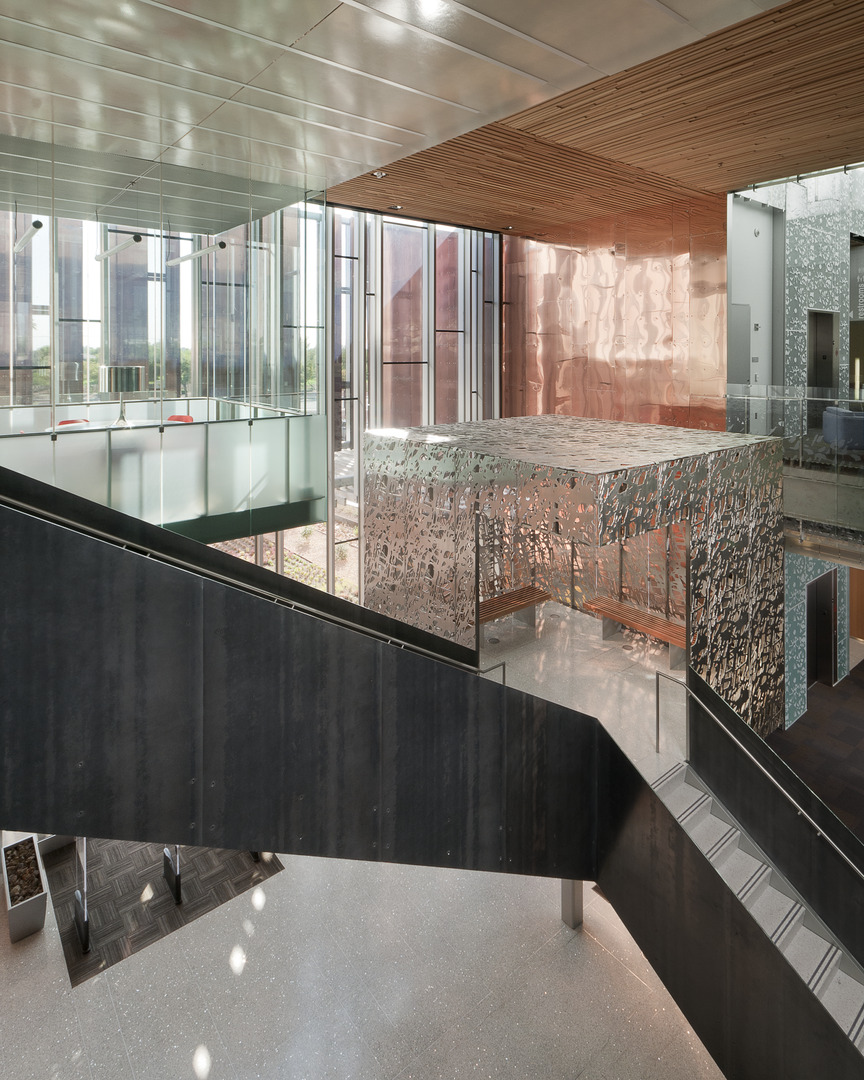
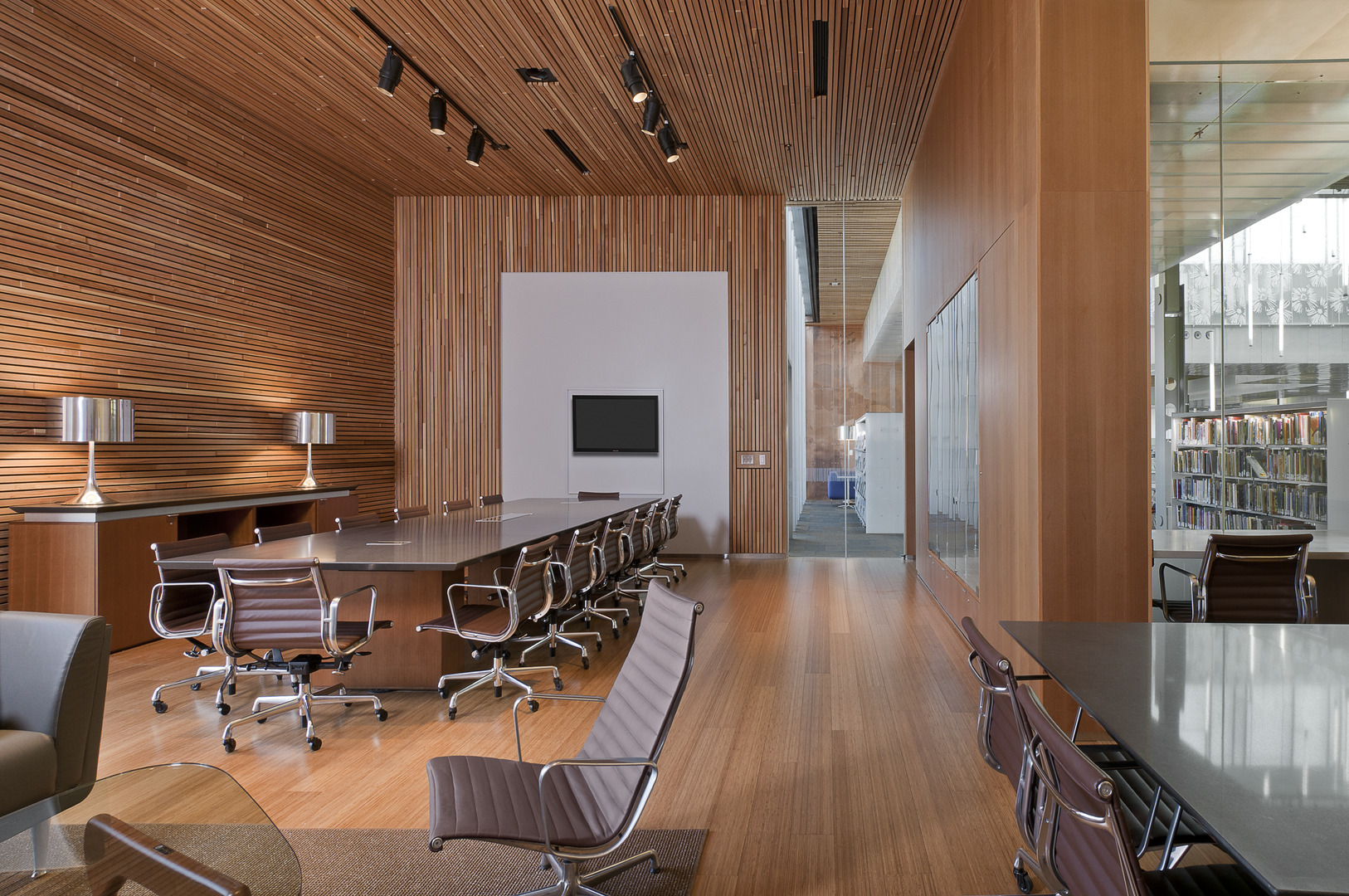
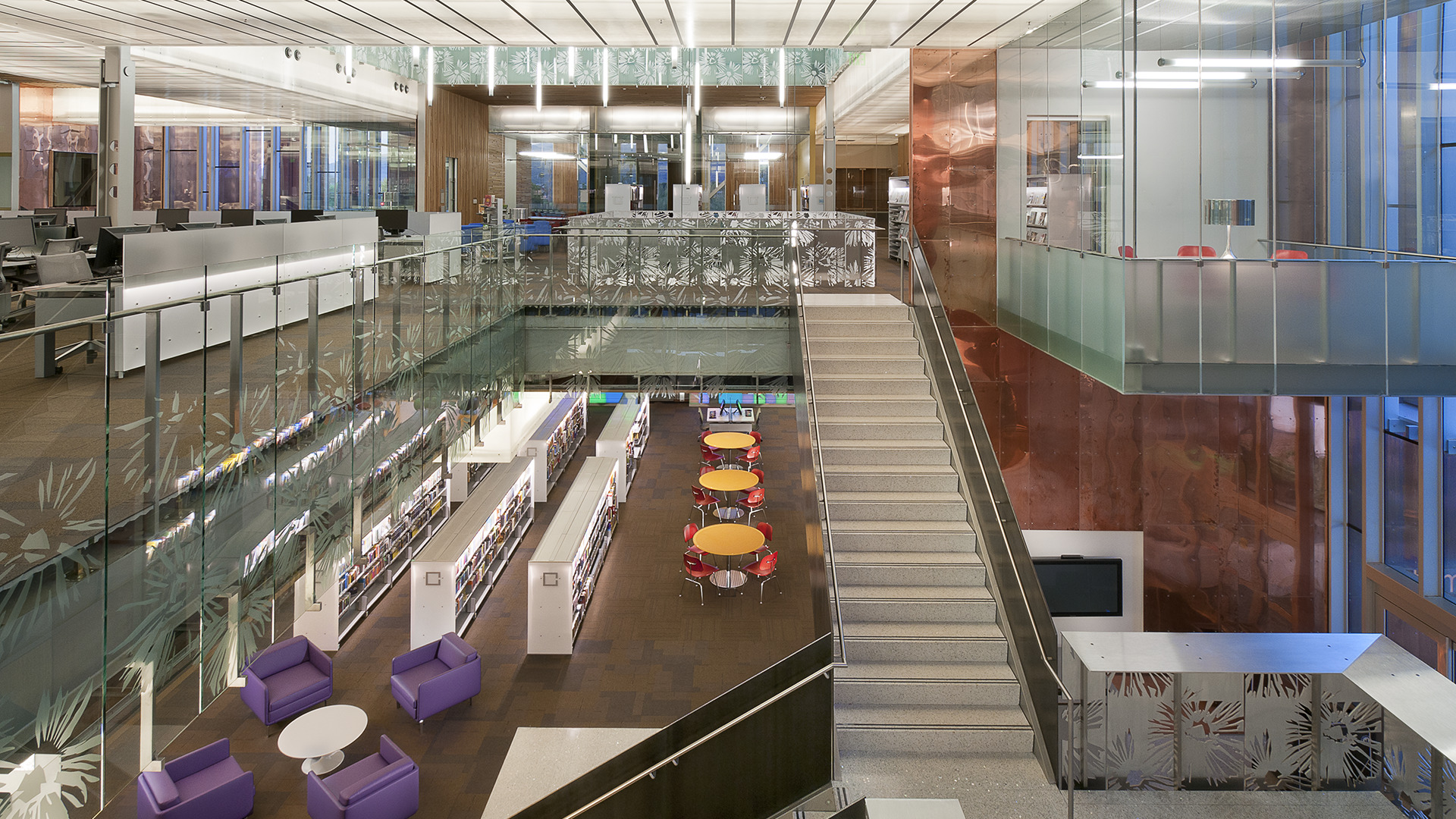
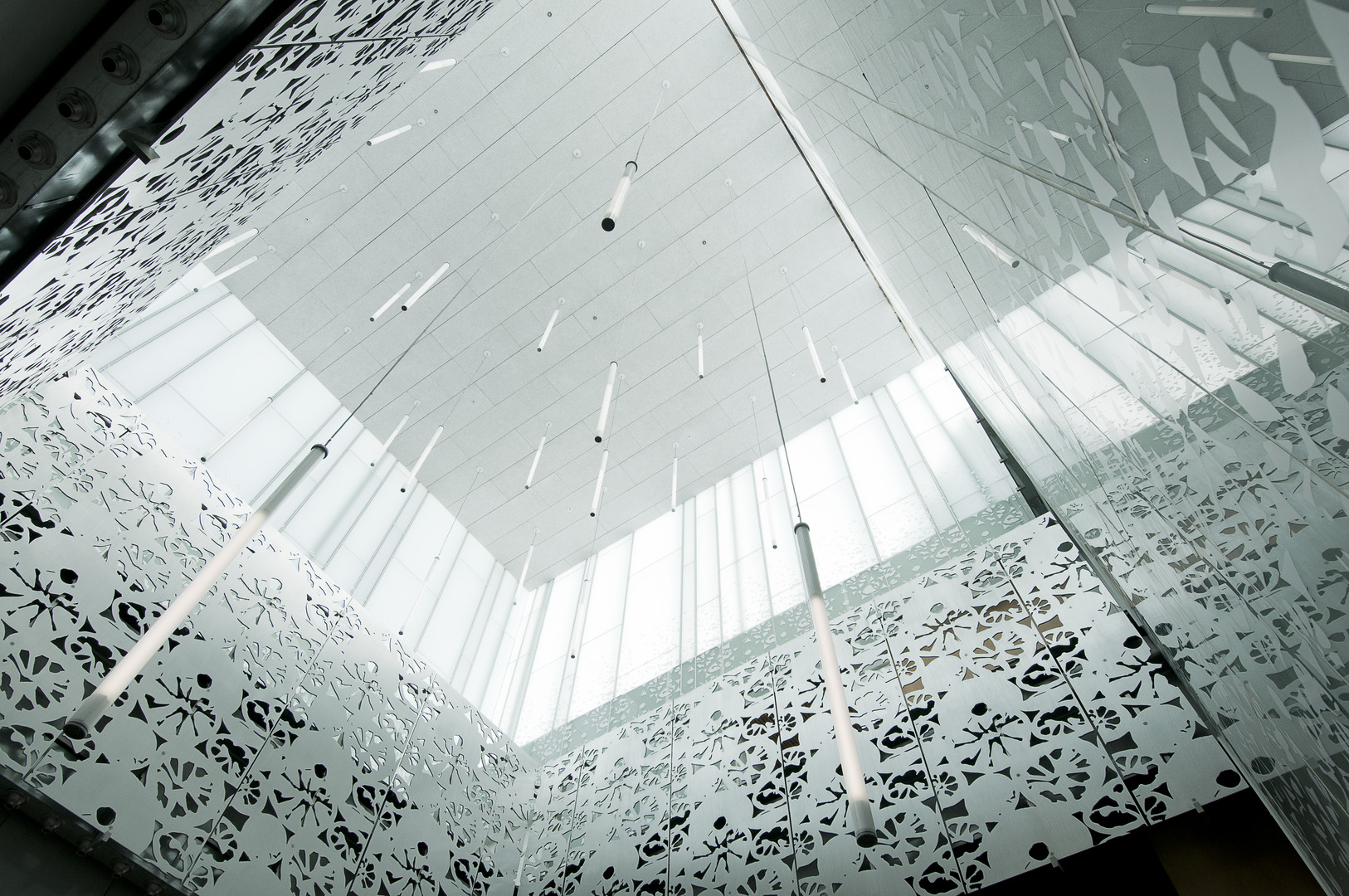
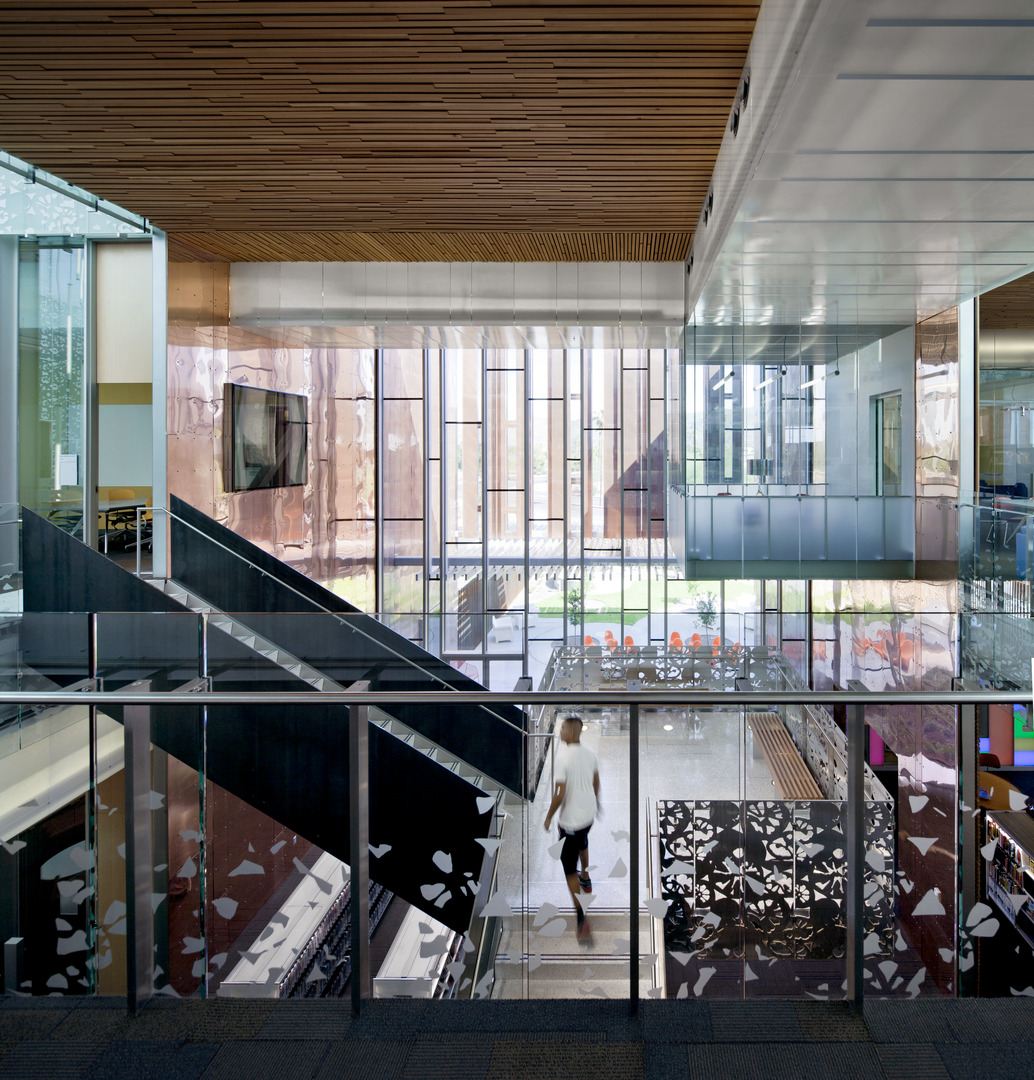
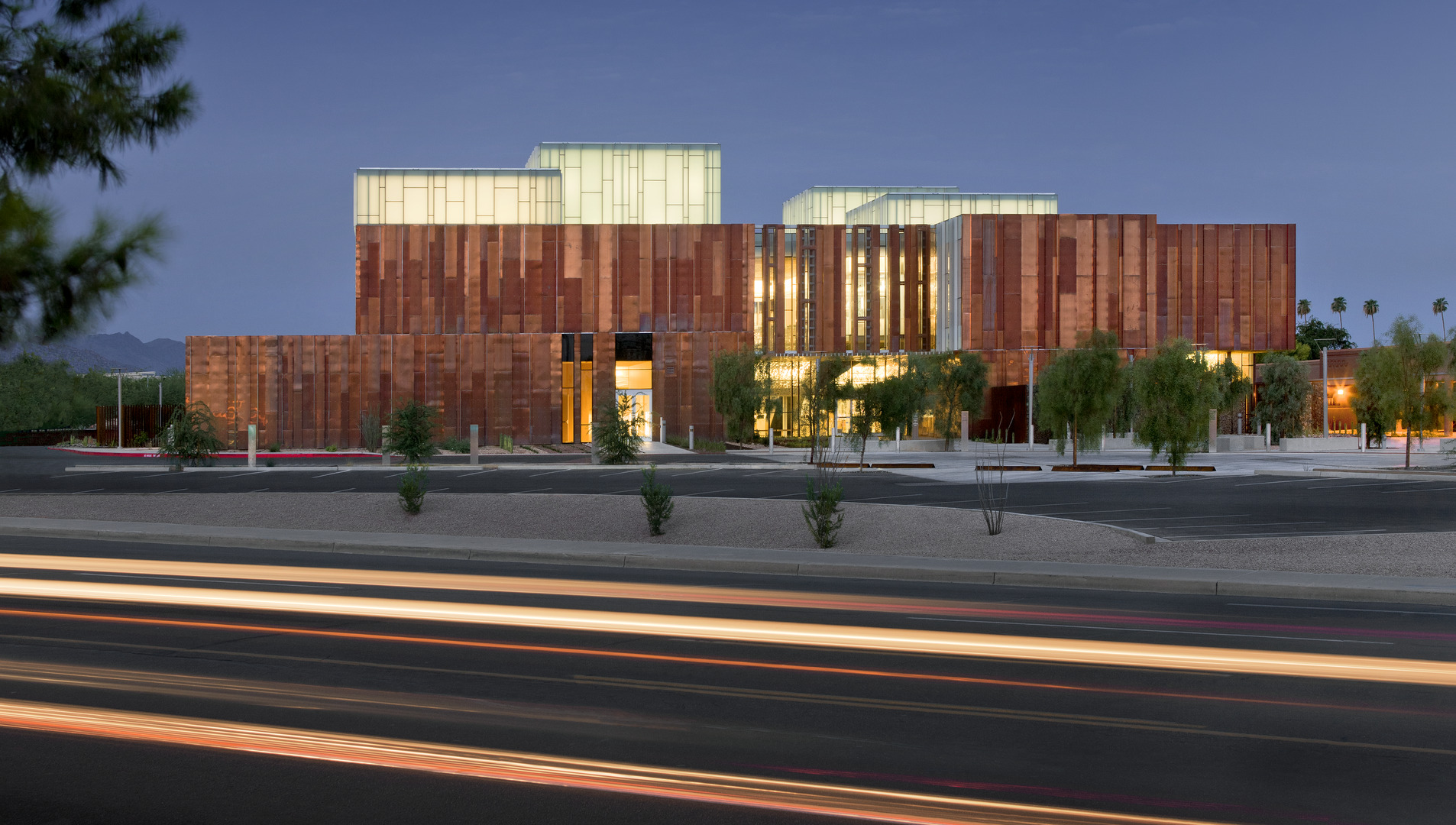
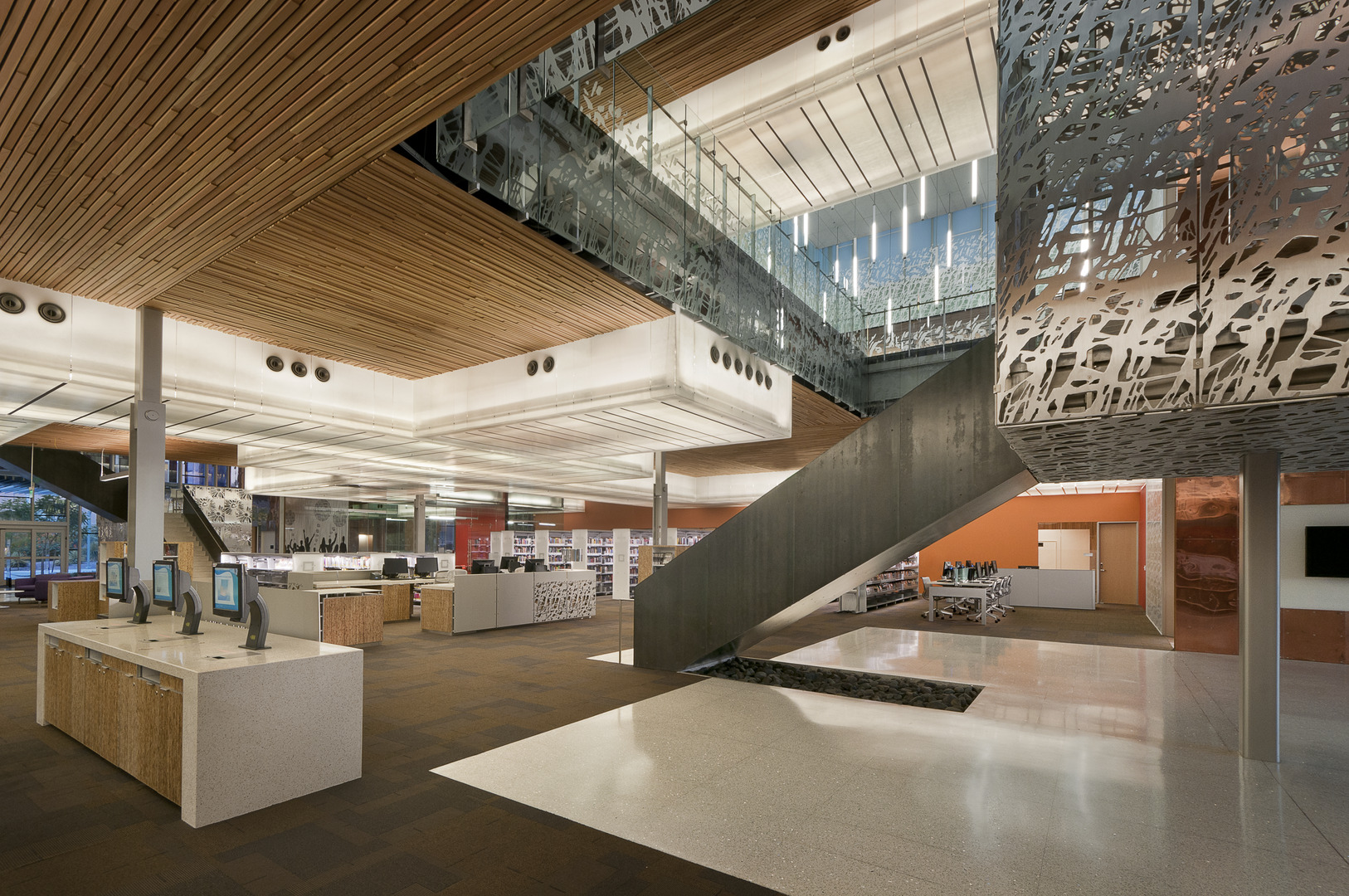
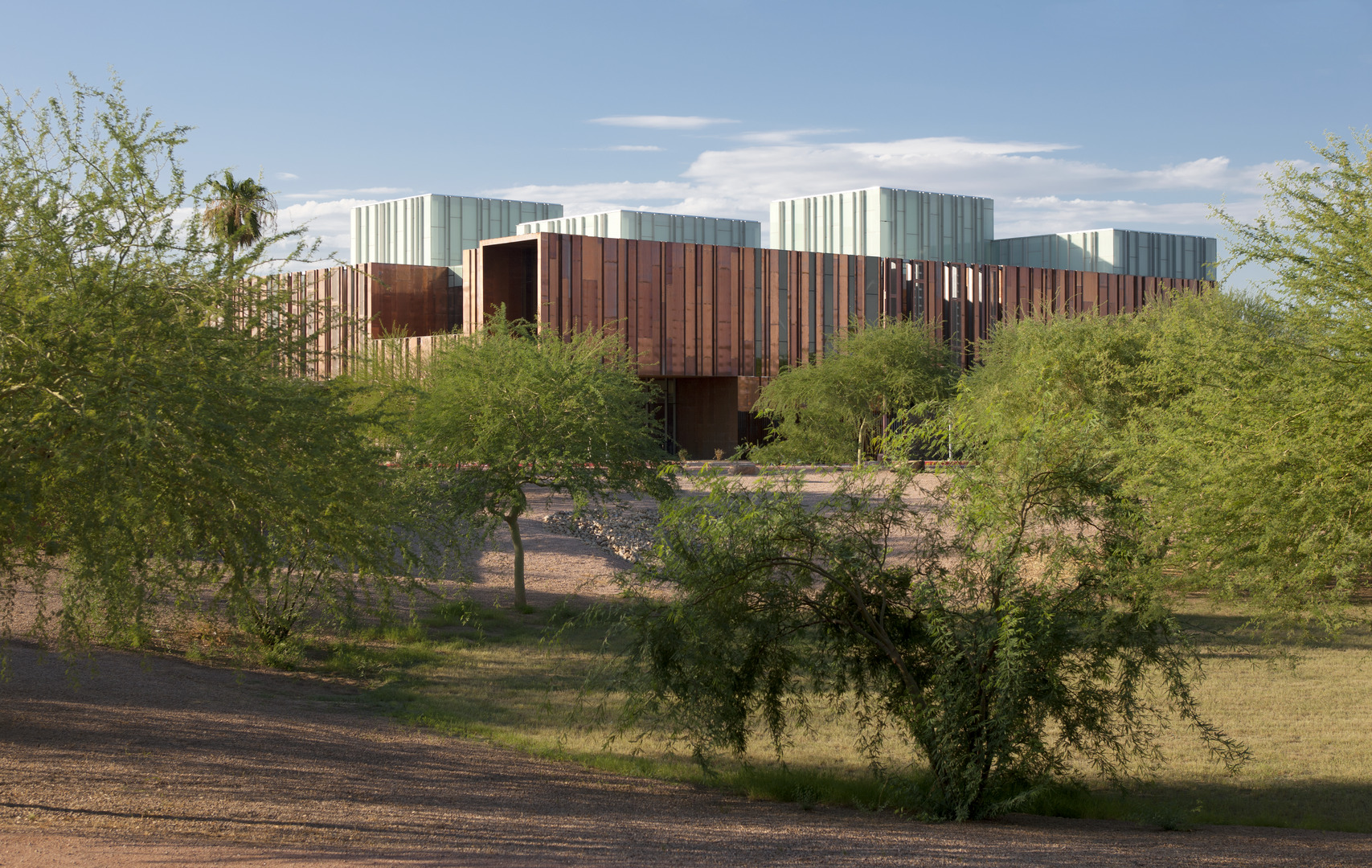
Community Driven Academic Library
The 51,000 sf facility integrates the social, academic, educational aspects and functional requirements of a college campus library with the popular and community based nature of a public library. This joint use library accommodates the needs of campus requirements for vivid, innovative pedagogy, and the City’s need for a fresh vital community library. The library features public use computing commons, 200 seat multi-purpose meeting space, collaborative classrooms, conference room, quiet group study rooms, cyber café, archive room, multi-media center, pod cast studio, and a library staff workroom. Additionally, an extensive teen and children’s areas, a children’s library and story time room are connected to the exterior courtyard dedicated for children’s use.
This state-of-the-art building is modeled after the architecture of an integrated circuit, providing insulation between disparate functions and promoting interaction and connection between like functions and spaces. Academic programs affiliated with those within the public library are organized around vertical interconnected spaces; providing a discrete connection while maintaining critical organization within each discipline. Natural light is brought deep into the diagram through a series of triple insulated clerestory monitors through a series of light shafts to the floors below. The interior of the building is lined in an acoustical cedar wood, frosted and laser cut acrylic panels reflect patterned abstractions of the agriculture that once was an integral part of the community.
The building consciously merges interior and exterior spaces to connect to the rich history of the site. The articulated exterior skin of weathering copper is designed to provide a naturally ventilating rain-screen, and triple layered insulated clerestories provide a high-performance enclosure.
The architecture of the new Community Library reflects the complexity and interconnected nature of both the information and the programs which it houses. The relatively simple form of the building is derived by the extrusion of program elements both vertically and horizontally, creating opportunities internal interconnections, exterior views, natural daylight and access to exterior spaces. Modeled after the architecture of an integrated circuit, the building provides insulation between disparate functions and promotes interaction and interconnection connection between like functions and spaces.
Client: Maricopa Community Colleges + City of Phoenix
Size: 51,600 SF
Project Type: Public Library + Academic Library (Hybrid)
Services: Architecture, Programming, Library Programming, Planning, Library Planning, Library Design, Interior Design, Graphics + Wayfinding
Delivery Method: CMAR
General Contractor: Haydon Building Company
MEP Engineer: Energy Systems Design
Structural Engineer: Rudow + Berry
Landscape Architect: Kimley-Horn + Associates
Photographer: Bill Timmerman
2013 – AIA / ALA, Excellence Award
2012 – AIA Western Mountain Region, Citation Award
2012 – Library Journal, New Landmark Library
2012 – IIDA Southwest Chapter PRIDE, Education Design Excellence Award
2012 – IIDA Southwest Chapter PRIDE, Public Merit Award
2012 – North American Copper in Architecture Award
2012 – Valley Forward Environmental Excellence, Crescordia Award: Civic
2012 – Valley Forward Environmental Excellence, Crescordia Award: Institutional
2012 - Valley Forward Environmental Excellence, Crescordia Award: Environmental, public spaces
The architecture of the new Community Library reflects the complexity and interconnected nature of both the information and the programs which it houses. The relatively simple form of the building is derived by the extrusion of program elements both vertically and horizontally, creating opportunities internal interconnections, exterior views, natural daylight and access to exterior spaces. Modeled after the architecture of an integrated circuit, the building provides insulation between disparate functions and promotes interaction and interconnection connection between like functions and spaces.
